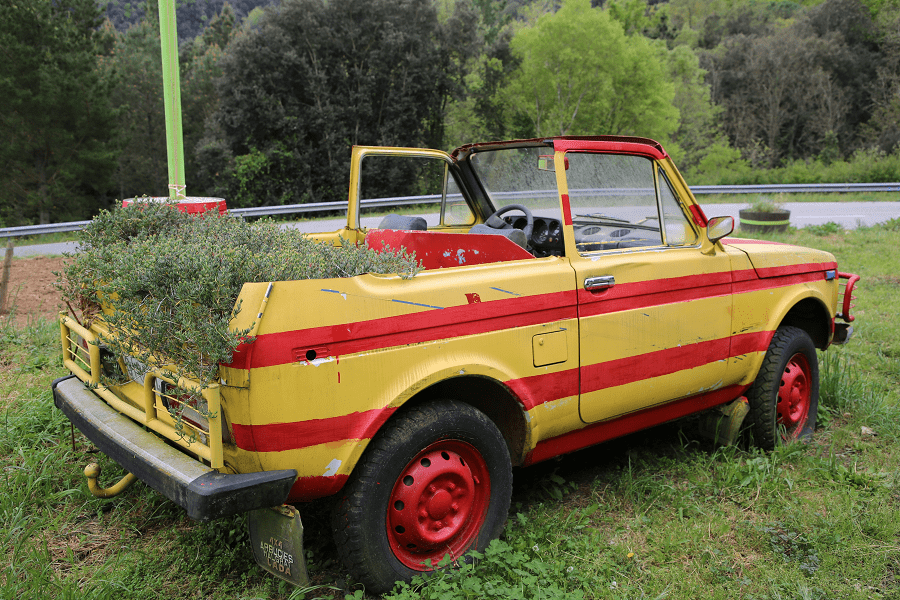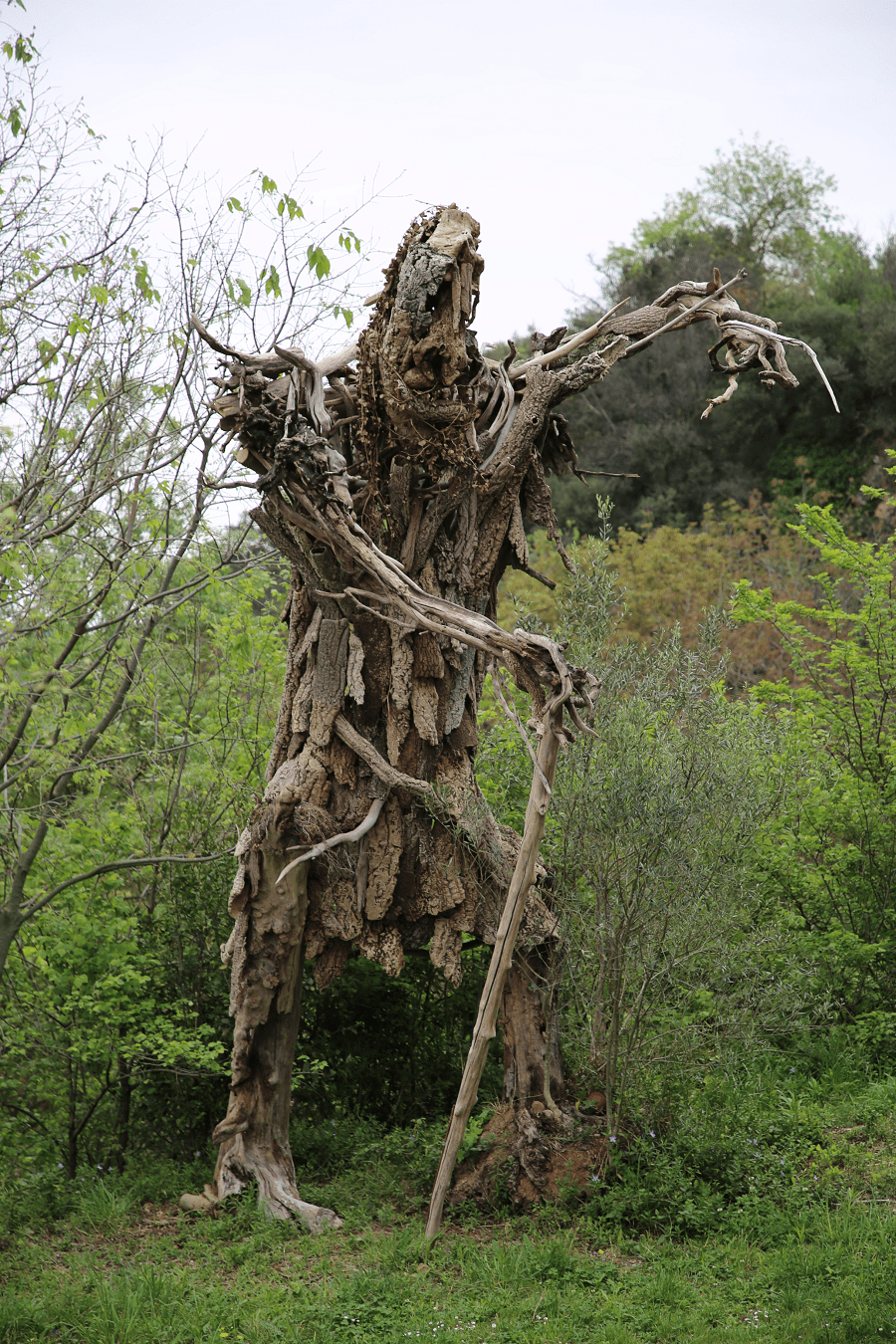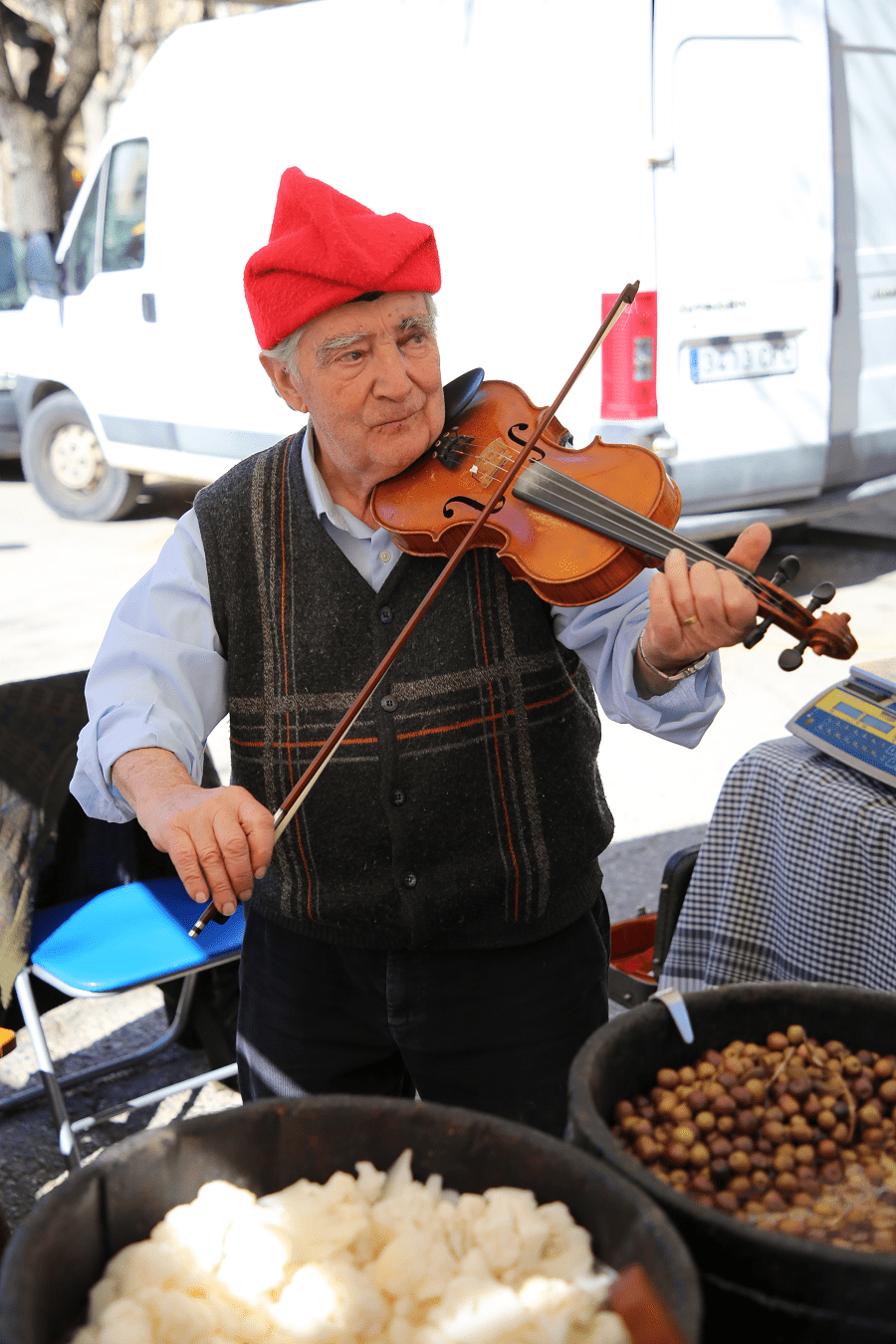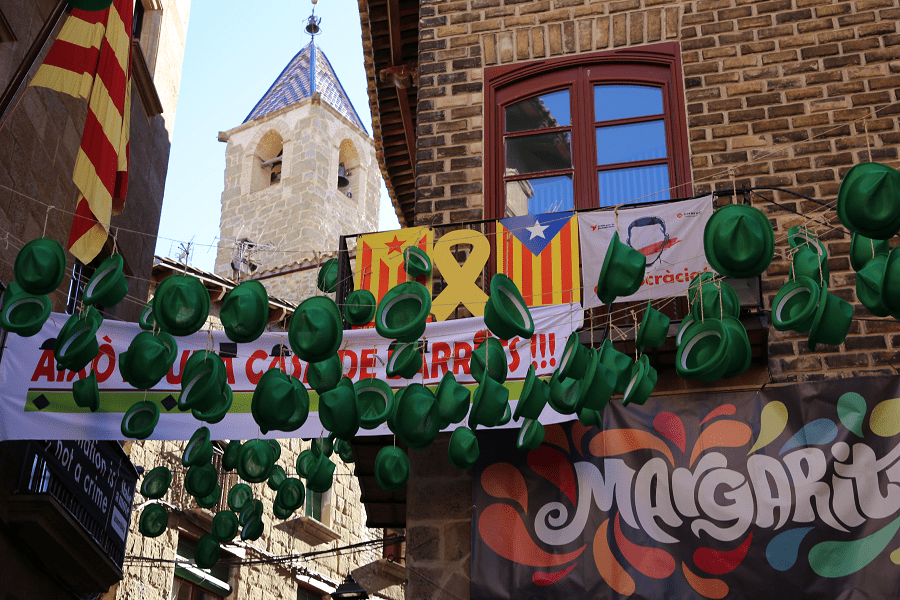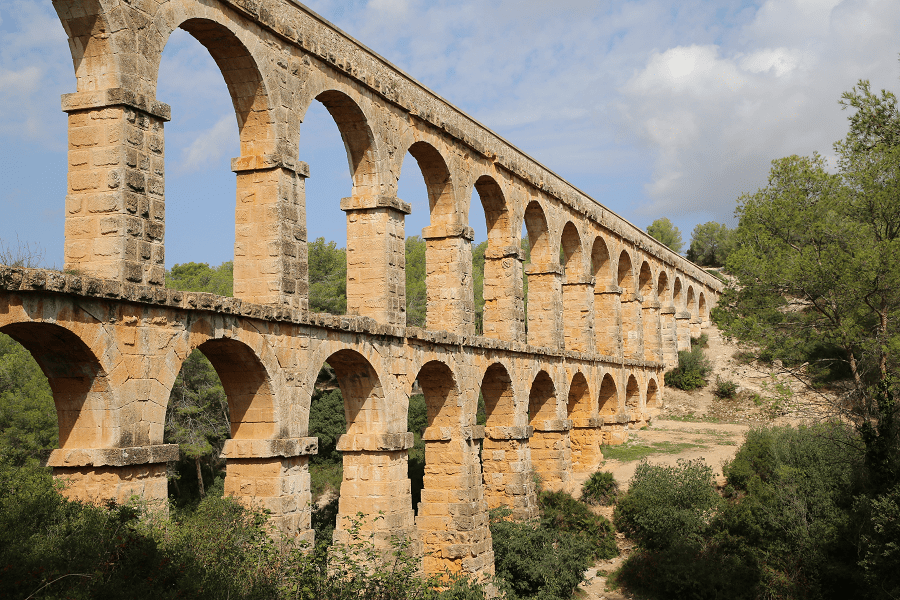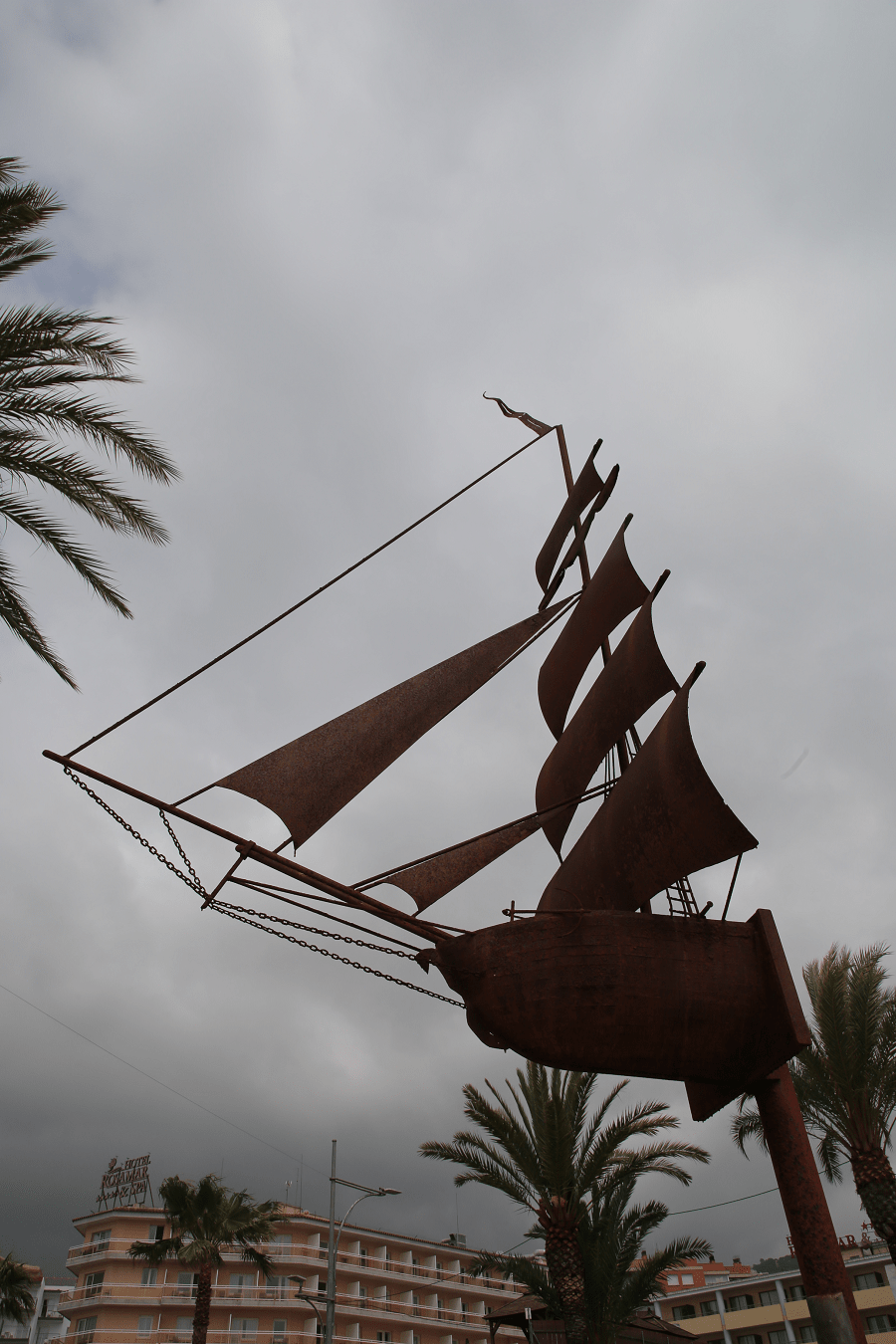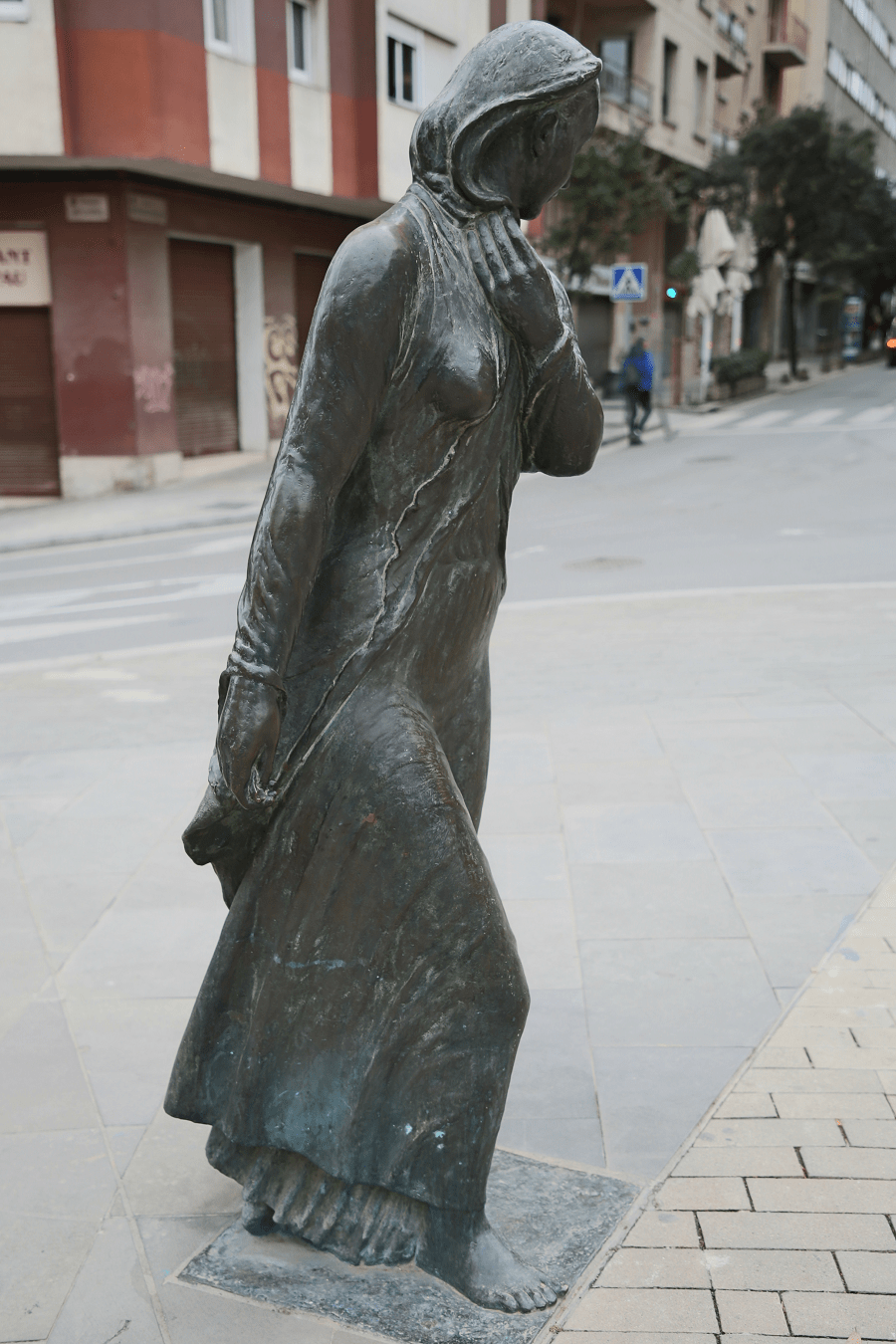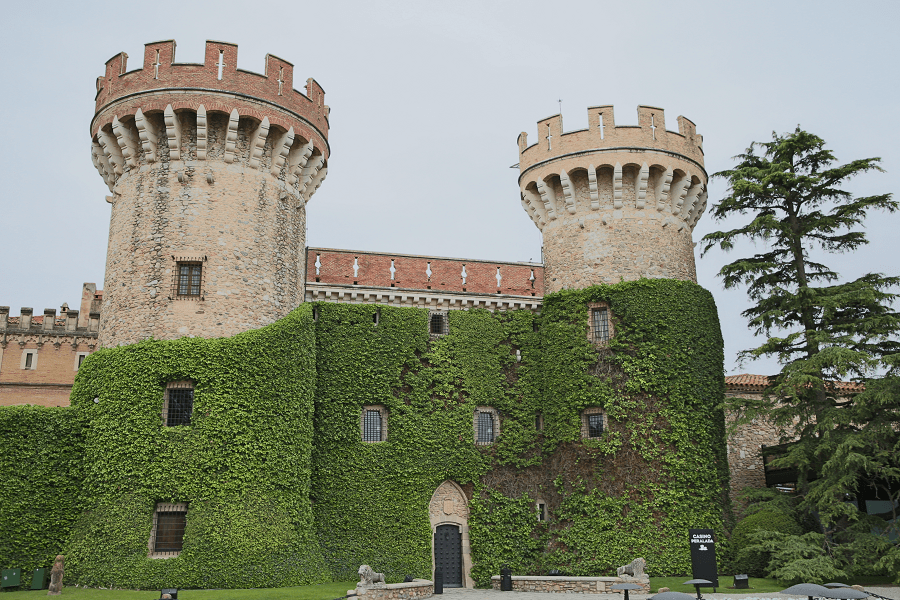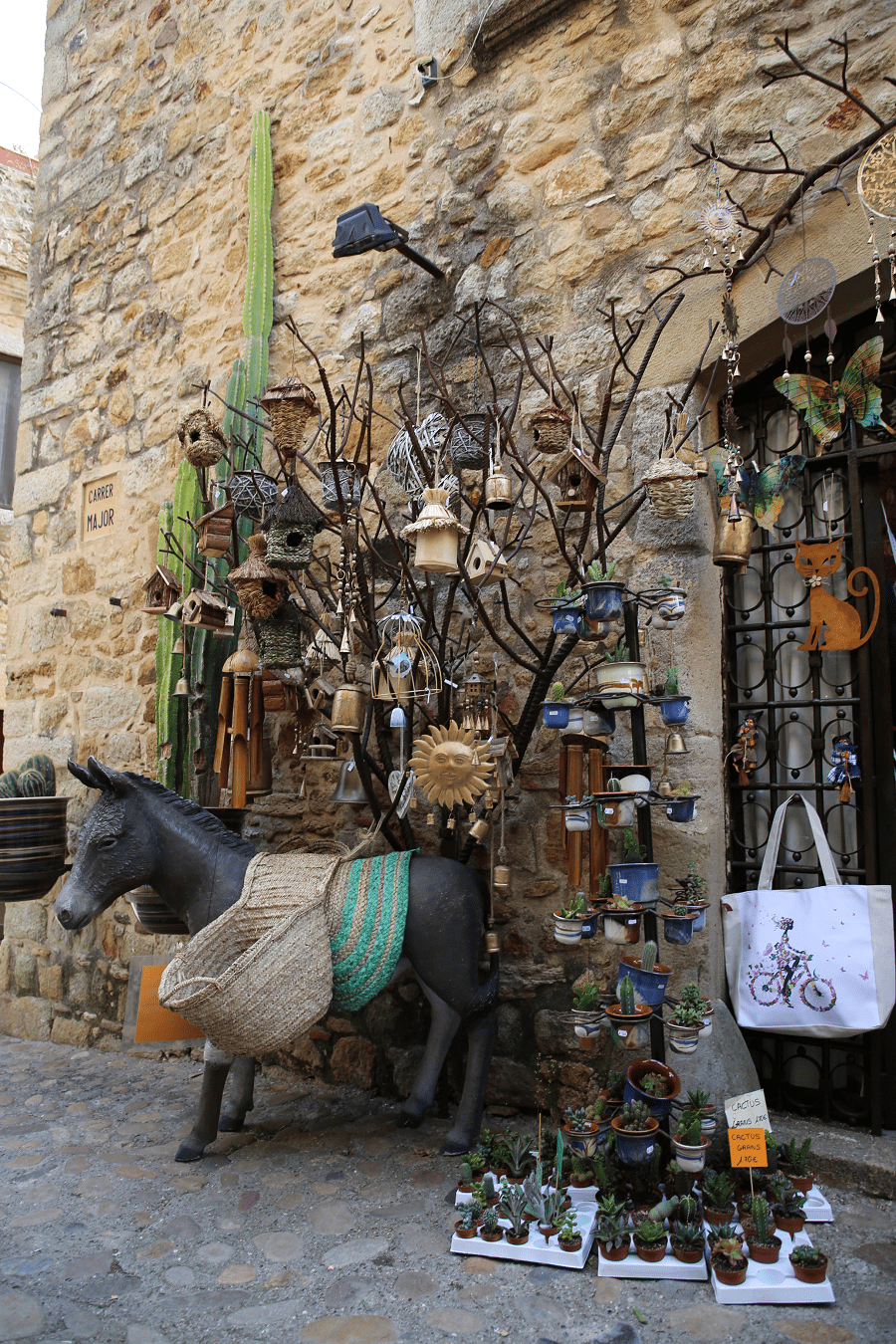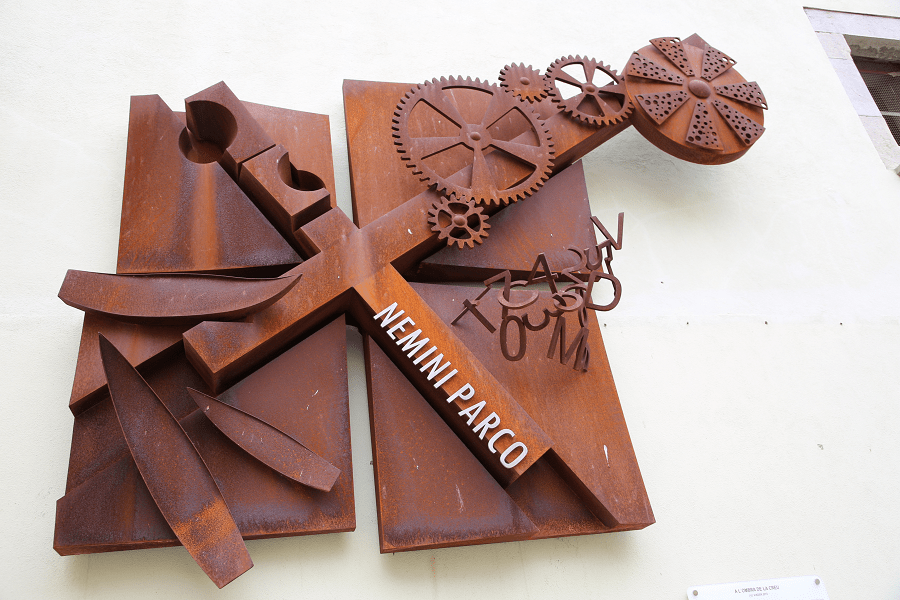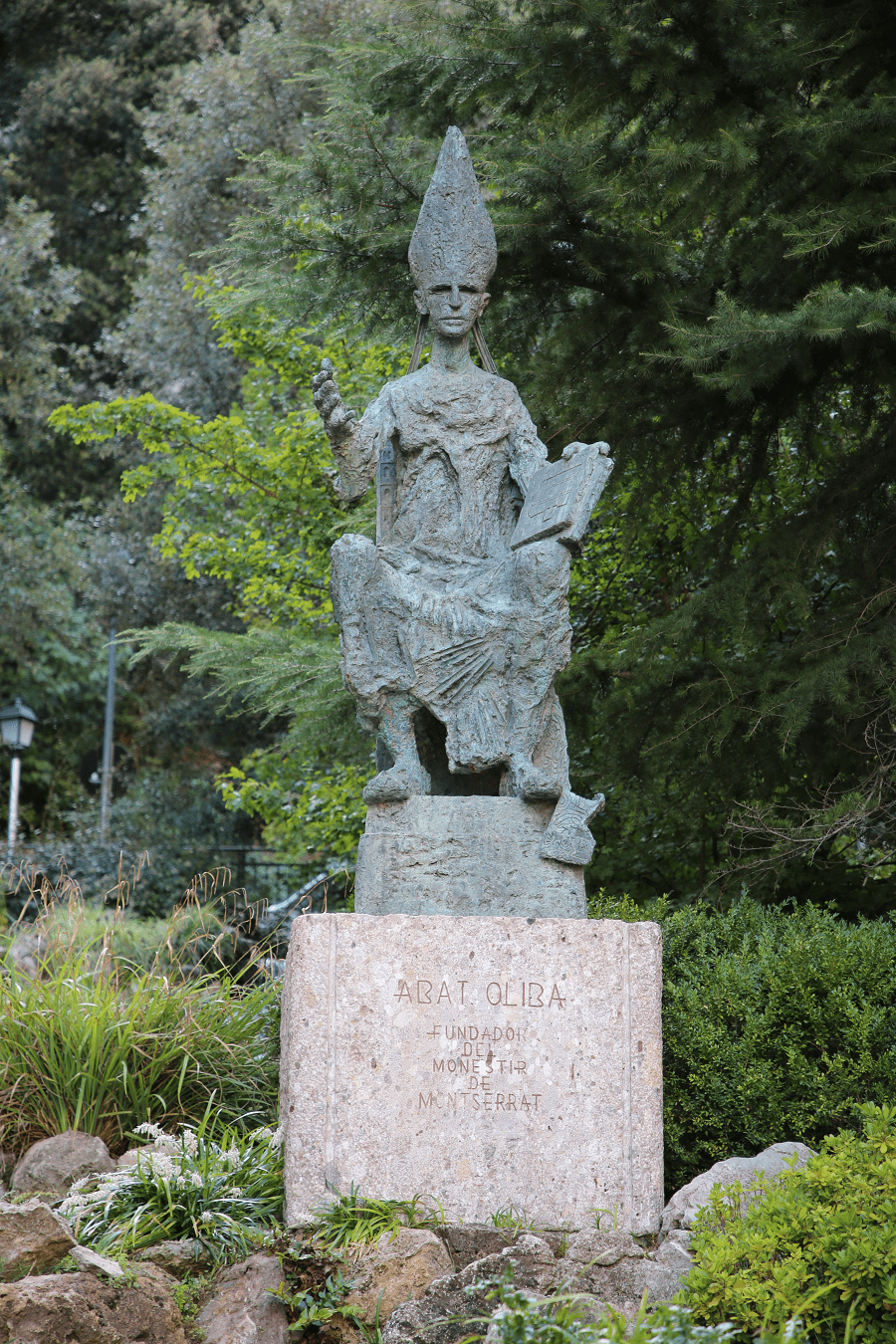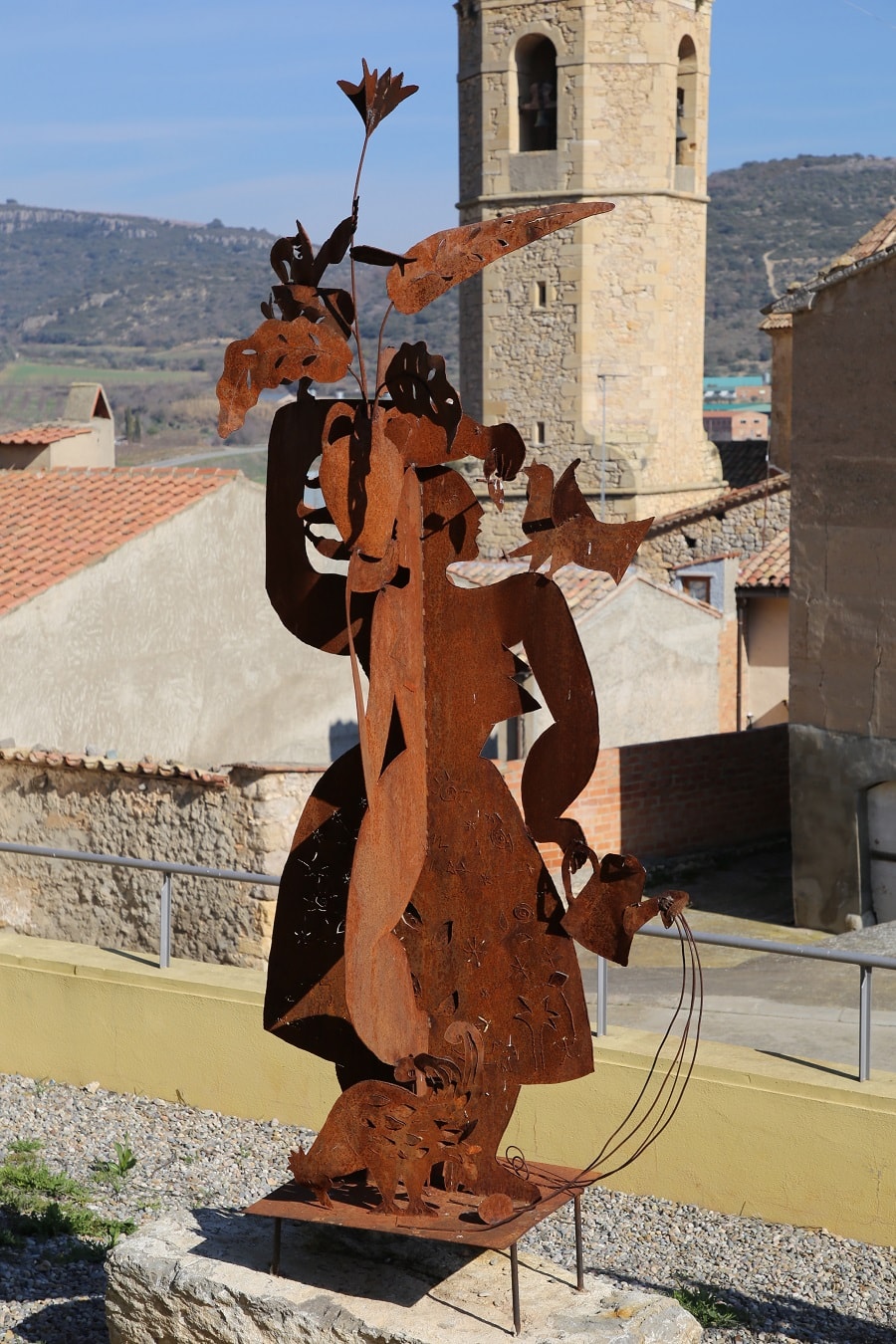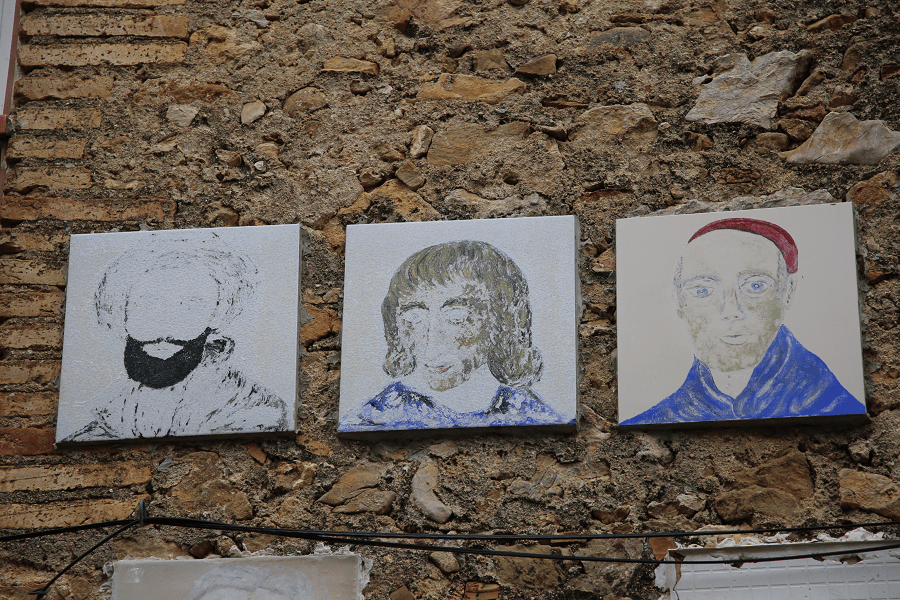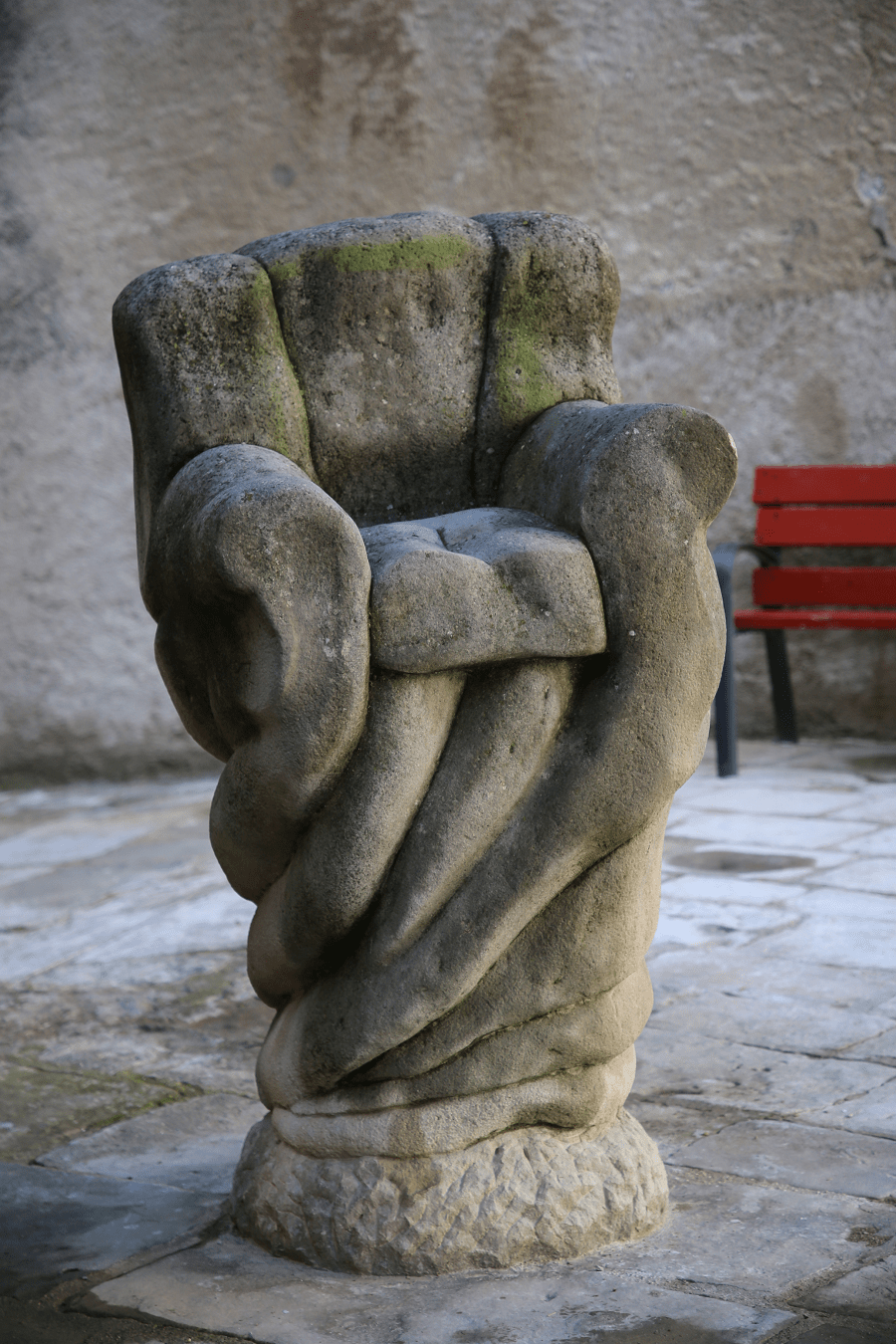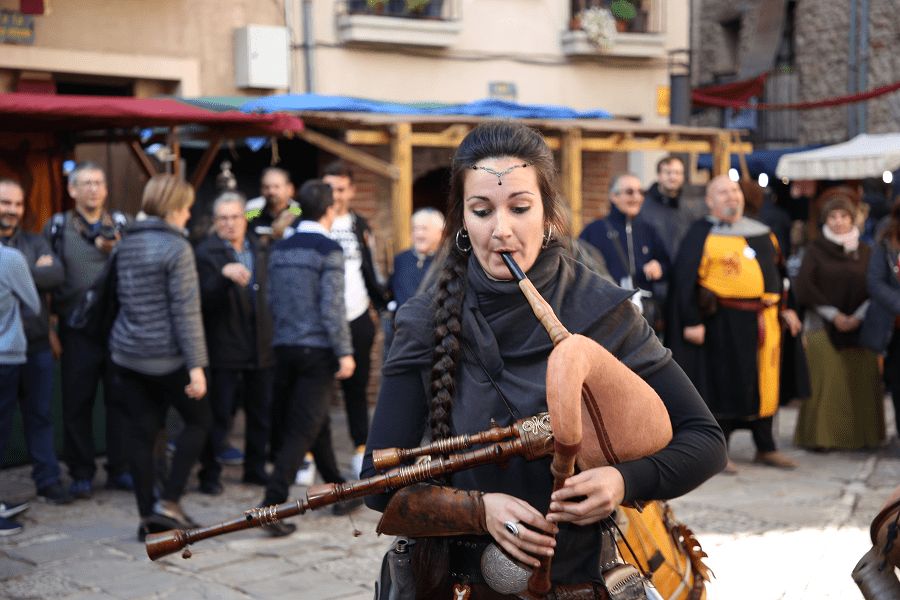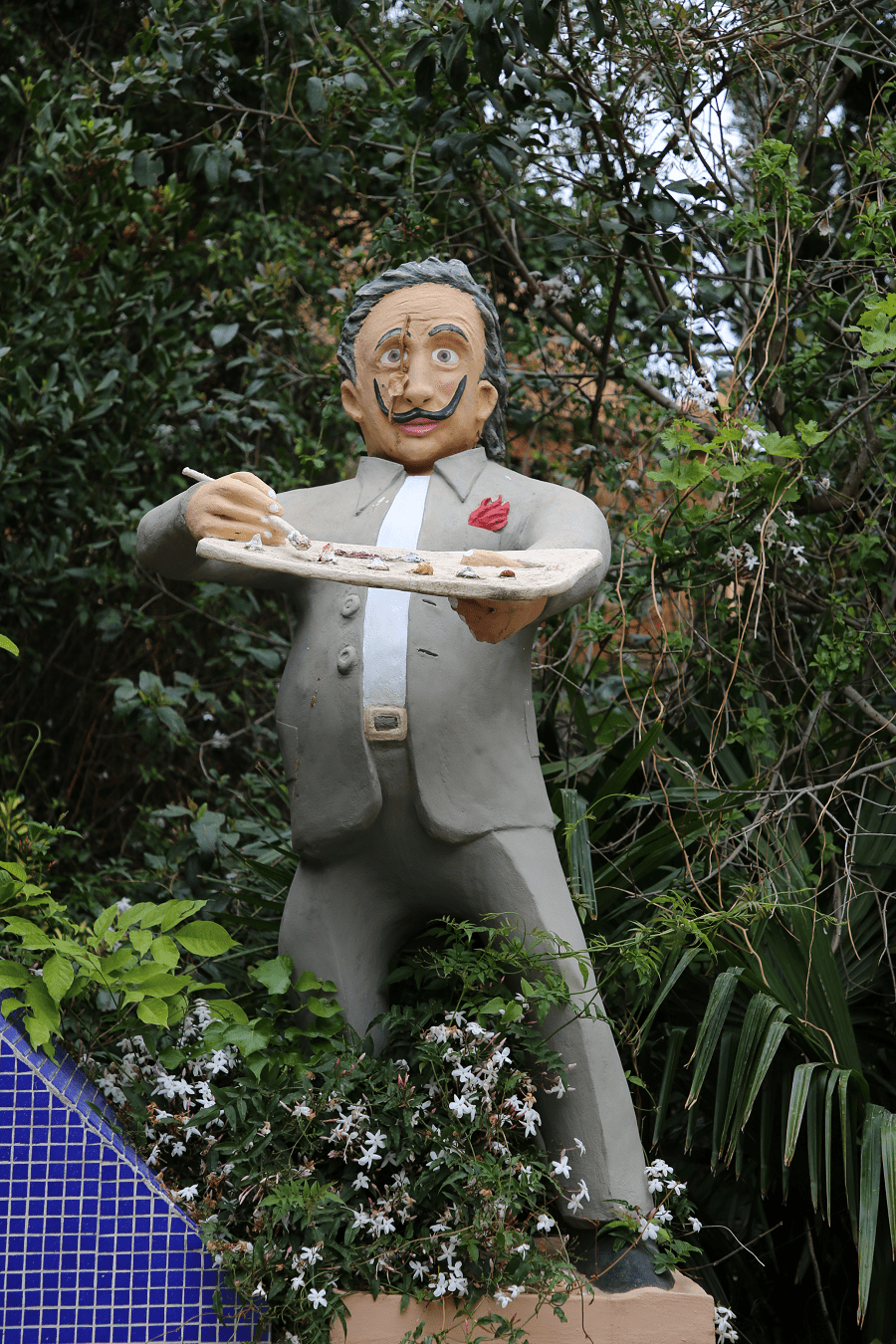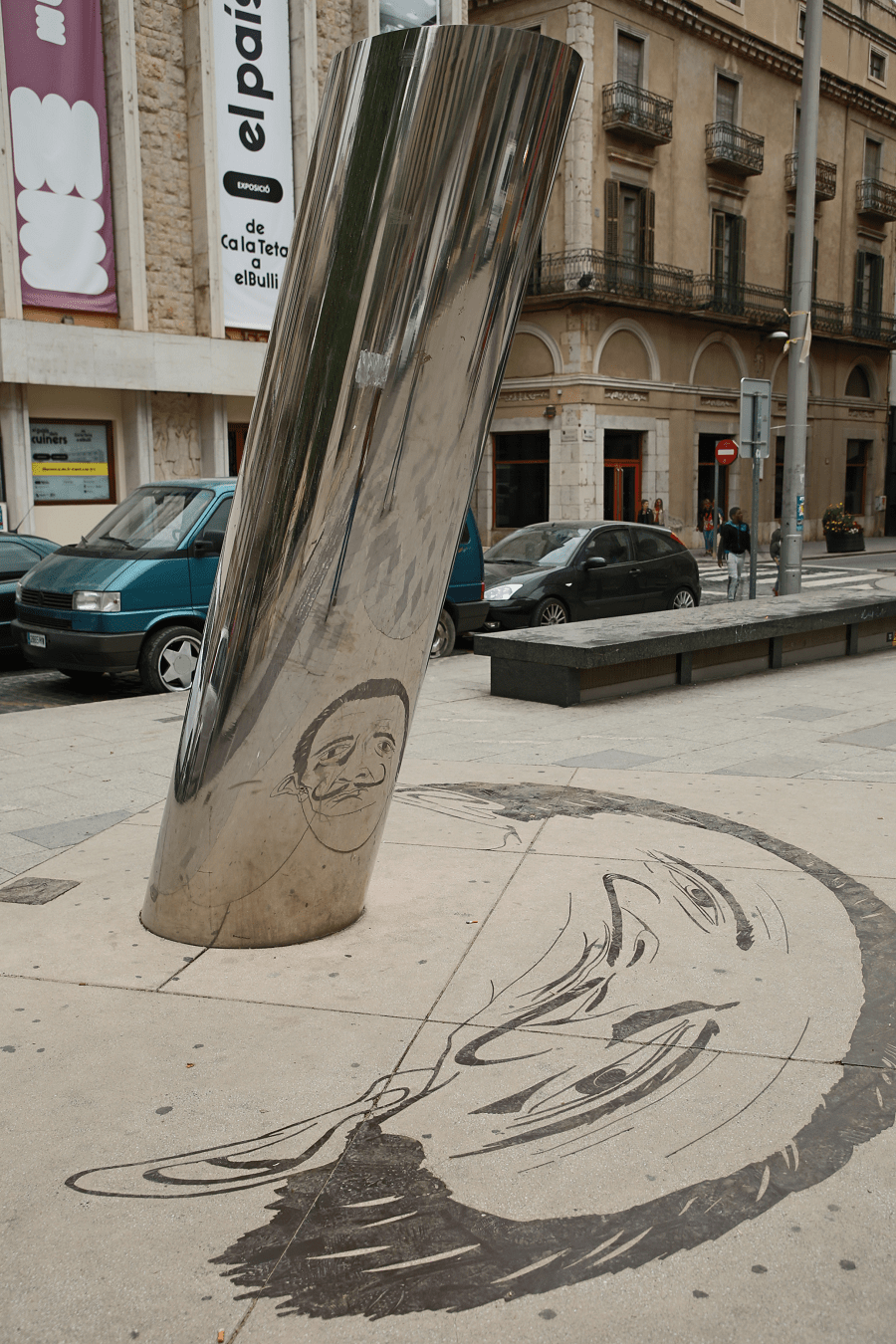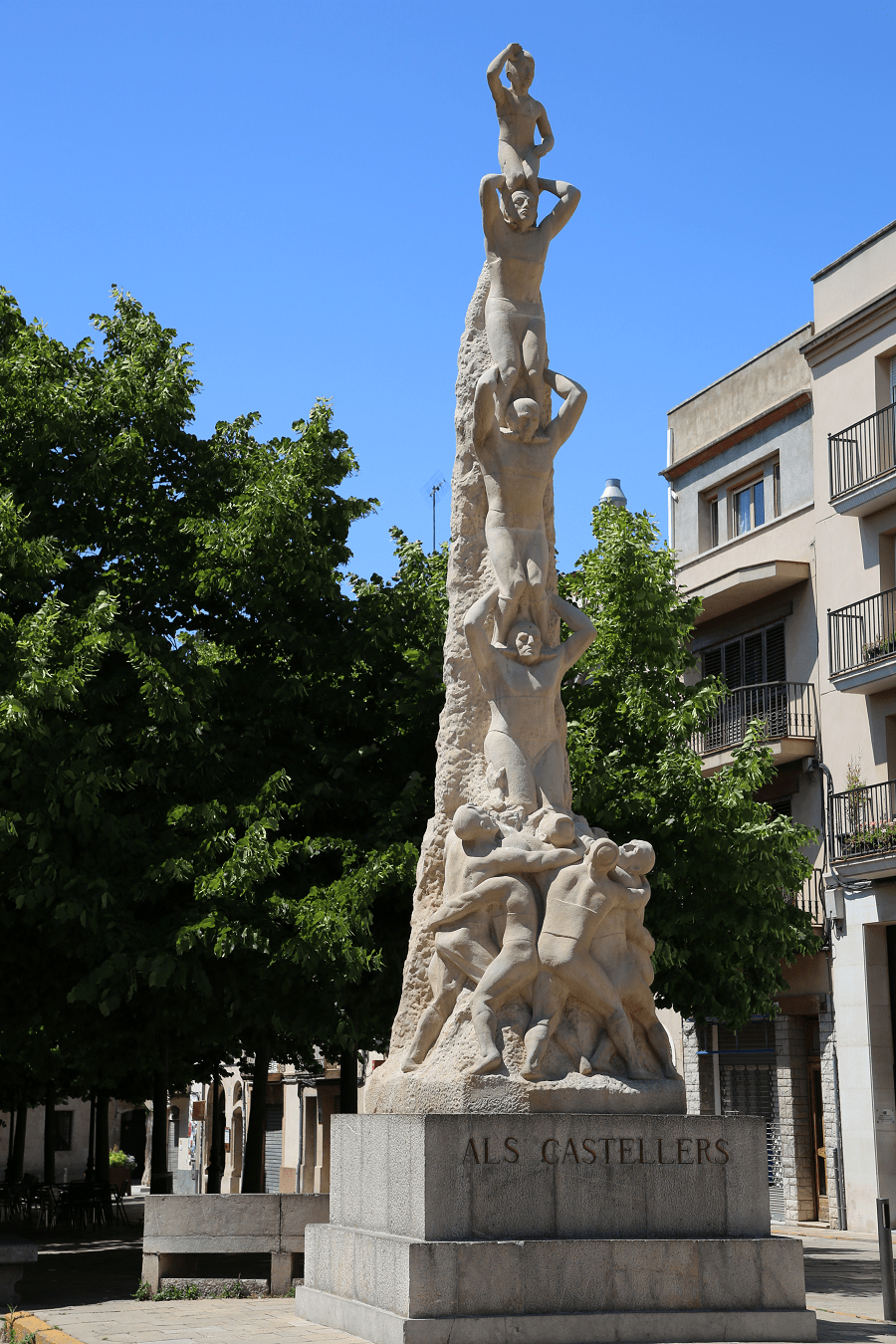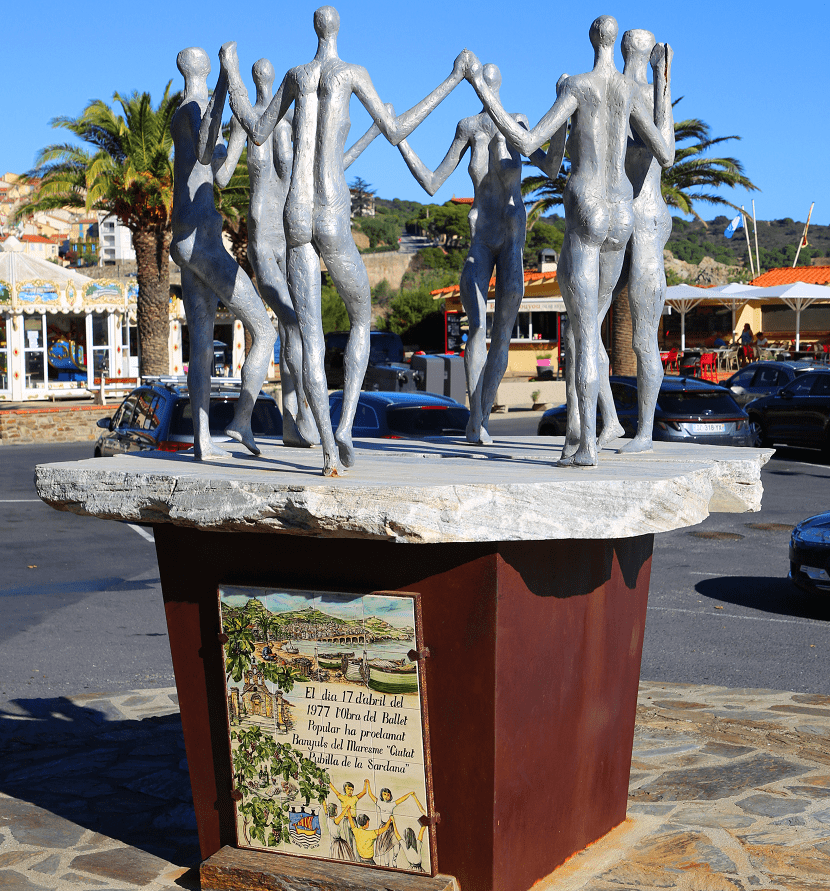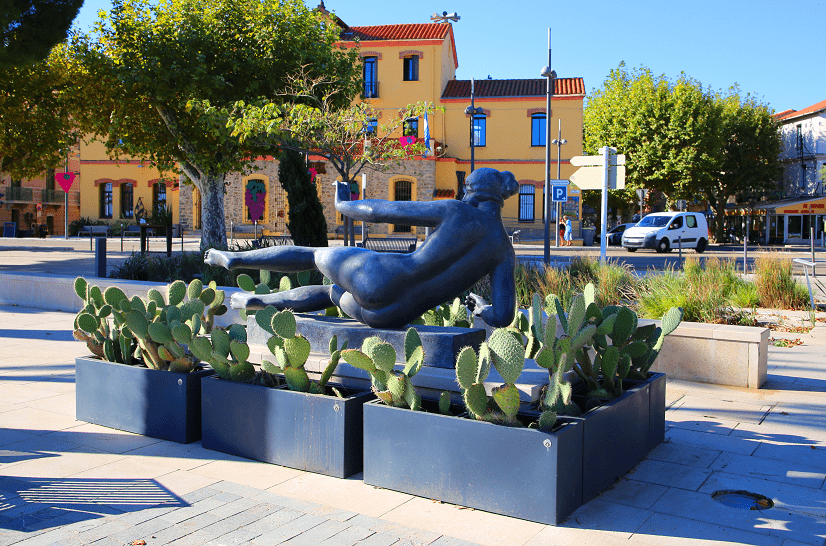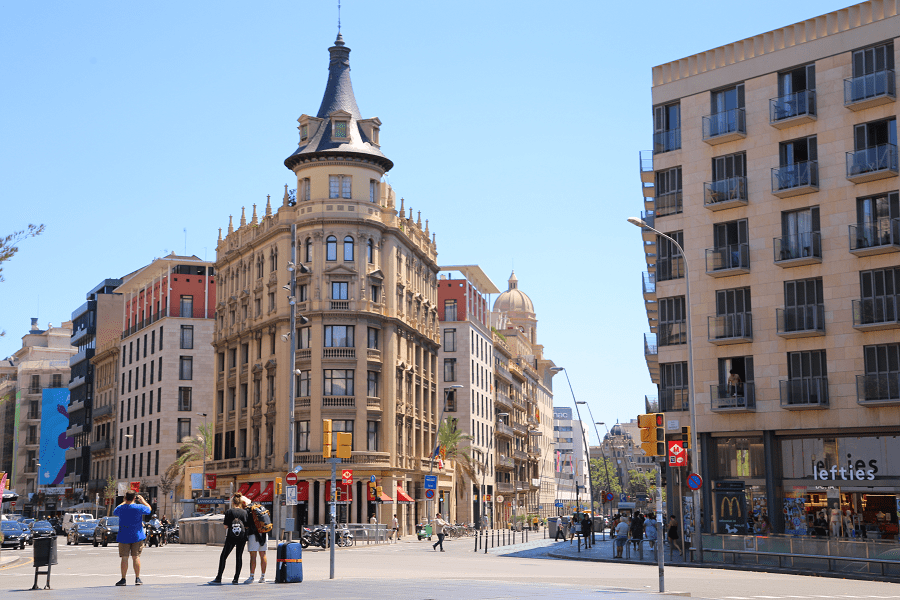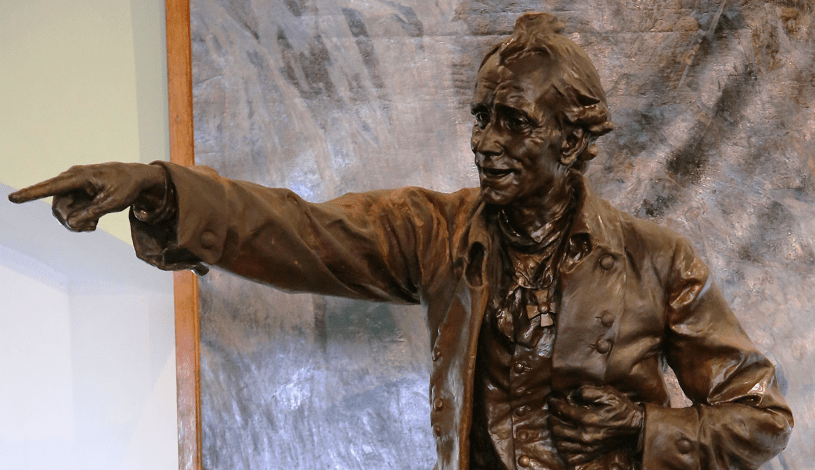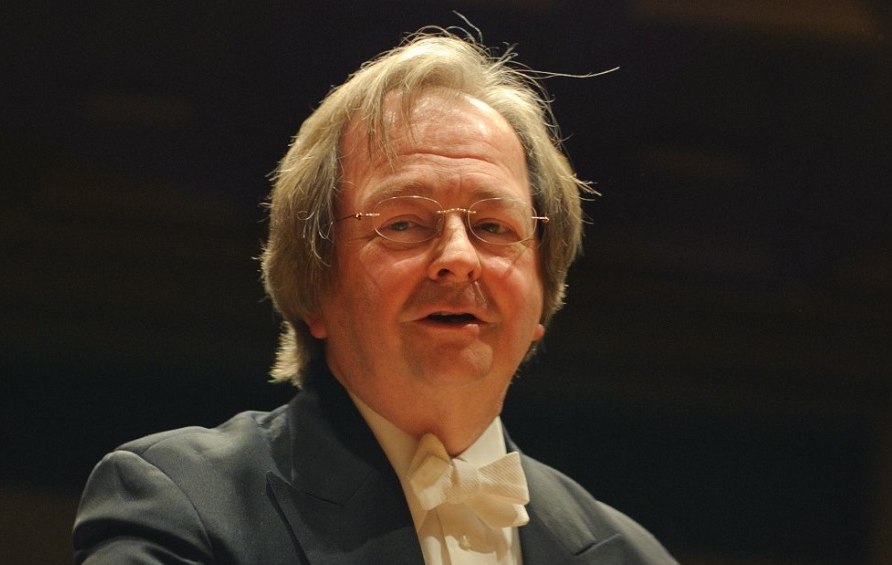Catalan art has gone through a parallel evolution to that of Spain and the rest of Europe, following diversely the multiple tendencies that emerged in the context of the history of Western art. Art has always been one of the main means of human expression, allowing humans to communicate ideas, feelings and their relation to the rest of the world. Its function can vary from the most practical to the most ornamental; It can have religious or simply aesthetic content; it can be lasting or ephemeral.
Throughout history, Catalonia has welcomed various cultures and civilizations, which contributed to its concept of art and left its legacy. Each historical period has had specific and definable characteristics, which have evolved over time. Some of these characteristics have been shared between regions and cultures, while others have been different and unique.
This led to the development of various artistic styles that may have a geographical or temporal origin, or just as well, be reduced to the work of one artist when clearly defined artistic forms are produced.
Catalan art is the result of the social and cultural amalgam brought about by the diverse peoples that inhabited its territory. The first prehistoric settlers were succeeded by Celts and Iberians that arrived during the Metal Ages (protohistory); these were later replaced with the first colonisers from Mediterranean civilizations, the Greeks; then the Romans arrived, who converted Catalonia into yet another province of their empire; after its fall, Catalonia was part of the Visigoth kingdom, and later suffered the Islamic invasion. The Middle Ages were the beginning of Catalan culture as a separate defined entity, with its own language, heiress of Latin, and the formation of the first Catalan state.
It was a time of splendour for Catalan art, the Romanesque and Gothic periods were very fruitful for the artistic development of the Principality of Catalonia.
During the modern age, with the connection to Spain and the following economic and cultural crises, art was declining, and Renaissance and Baroque styles were not particularly remarkable in the history of Catalan art. Finally, since the 19th century, with an economic and cultural revitalization, art flourished again; modernism is one of the most splendid periods of Catalan art. However, in the 20th century, the various styles that Catalan artists produced were brought up to date and connected with international trends, offering even worldwide leading figures such as Salvador Dalí, Joan Miró and Antoni Tàpies.
Prehistory
The first artistic manifestations occurred in Catalonia around 30000 BC, the era of the emergence of the European early modern humans (cro-magnon). The first inhabitants of the territory were small groups of hunter-gatherers, who generally lived in caves and shelters. These settlers developed rock art, paintings made on rocks and on the walls of the caves, which represent the first means of expression used by humans before the invention of writing. These paintings are generally related to religious rituals and express, in a symbolic language, the thoughts of the first human beings.
Paleolithic art
In 1964 the Cave of Tendo was discovered in the Moleta of Cartagena (San Carles de la Rápita). It was the image of a rampant bull, executed by a silhouetted stroke, in black, which was attributed to the period of the Upper Paleolithic. After a few years, this exhibit was revealed and still remains the only example of this kind of art that has appeared in the territory.
Levantine Art
During the Epipaleolithic period (10000-6500 years BC), hunter-gatherer groups expressed their world of beliefs with an exclusively pictorial art, the Levantine art, of which Catalonia has excellent examples, particularly in Lleida and Tarragona, and a more discreet presence in the province of Barcelona. Catalonia had the honor of being the first to discover an example of those paintings at the site of Roca dels Moros del Cogul (Lleida), in 1908, which displays a human figure painted in a way not known in western prehistory.
These expressions always appear in natural caves; They are figurative, meticulous in detail, with flat and monochrome images. It appears that bird feathers were used as a painting tool to achieve the so-called “Levant pen stroke.” Its essential iconographic elements, the animal and the human figure, receive a different treatment: the first ones are depicted with more mimicry of reality, with very expressive details (for example, on hooves and horns); the human figure reflects a very unique aesthetic concept: elongated body and triangular torso with a narrow waistband, these images were created by single strokes, with a very characteristic dynamism that reflects action and movement. The pictorial compositions of archers and animals are extraordinarily suggestive in terms of the behaviors of those human groups, hence they are always taken as paradigmatic examples of the prehistoric world.
The most popular sites in Catalonia are the aforementioned Cogul shelter, the Vilàs cave (Os de Balaguer), the Balma dels Punts (l’Albi), in Lleida, and Cabra Feixet (El Perelló), the Cingle Cave, from Ramat (Tivissa), Llort and Ramon (Montblanc), Escoda Cave, Racó del Perdigó and Cova del Carles in Vandellòs, the Cave of Caparrella (Rasquera) and the center of the Sierra de La Pietat (Ulldecona), in Tarragona.
The distinctive and unique qualities of Levantine art, also called Rock art of the Iberian Mediterranean Basin, determined its declaration as a UNESCO World Heritage in 1998, collectively with all the prehistoric artistic expressions that are found in the area, those of Paleolithic, as well as, schematic art, under the conventional administrative designation of Rock art of the Mediterranean arch of the Iberian Peninsula.
Iberian Schematic art
The other great prehistoric art style is the so-called schematic art, of Neolithic groups (6500-1000 years BC), the first ones that began to dominate agriculture and live in villages. It is an art that is based on abstraction and monochrome (red, black, very rarely white) and presents three large groups of motifs: geometrical (dots, stripes, triangles and rings), staining and those that show distant references to figuration (anthropomorphic and zoomorphic). Its technique is based on the gesture, keeping a structure of surprising modernity and, despite this, it seems extraordinarily enigmatic. The most significant sites are found in Lleida: Cogul, Valle de la Coma and Balma de los Puntos (Albi), Aixoplucs del Francès and the Barranc de Vila-seca (Os de Balaguer), and in Tarragona: Cova del Pi (Tivissa), Gran and Portell de les Lletres (Montblanc), and the site near Cova Pintada (Alfara de Carles).
During the Neolithic period, the earliest architectural representations dedicated to funeral or religious rites were generally related to the so-called megalithic culture. Among the main monuments stand out: the menhirs, such as those of Palaces (Agullana, Alt Empordà) and Murtra (Sant Climent Sescebes); the dolmens, such as Creu d’en Cobertella (Roses) and the one of Mas Bousarenys (Santa Cristina d’Aro); or the covered galleries, such as the Moros cemetery (Torrent, Baix Empordà), and cave d’en Daina (Romanyà de la Selva). Later, around 1000 BC, appeared the first necropolis in which the deceased were cremated and deposited in ceramic urns. Several of these necropolises have been found in Can Missert (Terrassa), Can Bec de Baix (Agullana) and La Pedrera (Vallfogona de Balaguer).
However, in the so-called Bronze age (1500 BC to 1000 BC), the manufacture of various artisan objects and utensils began, especially ceramics and goldsmithing, from which the production of beakers and drinking vessels stood out.
The bronze age is succeeded by the iron age, which coincides with the arrival of Celts to Catalan towns, who came from central Europe and brought with them diverse objects (arms, clothes, ornaments and ceramics) that have been discovered in burial areas.
Antiquity
Iberian art
Despite the settlement of the Iberian peoples in the Catalan territory around the 7th century BC, there are not many examples of Iberian art of relevance, except some objects of everyday use or some small rudimentarily decorated pieces, like a small bronze representation of a pair of oxen, from Castellet de Banyoles de Tivissa, a gray ceramic vessel with a small landscape, from the Boscà hill (Badalona), or some remains from a funeral monument sculpture in Sant Martí Sarroca (Alt Penedès), from the 3rd century BC, with the figure of a possible Iberian king seated on a throne.
The Iberian settlements were the first stable settlements in the territory, with villages mapped with urban planning. Defensive walls surrounded them, and they were generally located on elevated areas. Some remarkable remains were found in the Puig de Castellet (Lloret de Mar), Puig de Sant Andreu (Ullastret), La Fosca Castle (Palamós) and Mas Castellar (Pontós).
Greek art
The Greeks were the first great Mediterranean civilization to settle in Catalonia. In the sixth century BC, the city of Empúries (Empòrion) was founded. It was one of the first large cities built on the Iberian Peninsula and became an important trade center and gateway to Greek culture. The so-called Greek Neapolis of Empúries rose around the harbor, with highly developed urban planning, where large public buildings stood out, especially the temple dedicated to the god of medicine, Asclepi.
In Empúries, the most notable development is that of Greek ceramics, of which stand out attic pottery painted with scenes of various types, with a high-quality naturalist style, the example particularly worth mentioning is a drinking vessel found in the Neapolis of Empúries, dated approximately to the 6th century BC, with a representation of the Greek god Pallas Athena. Greek art can also be perceived in the Iberian indigenous villages because of the commercial relations between the Greeks and the indigenous peoples of Catalonia: a good example is the treasure found in the Iberian settlement of Castellet de Banyoles de Tivissa, especially the gilded silver platers with mythological representations.
The first examples of sculpture found in Catalan territory also come from Empúries, for example, the famous statue of the god Asclepi, found in the southern sanctuary of Neapolis in 1909—a work of great naturalism and magnificent execution; or the bust of the goddess Aphrodite, from the 4th century BC, of Hellenistic times, which suggests a remarkable Praxitelian influence.
Roman art
In the 3rd century BC, during the Second Punic War between Rome and Carthage, the Romans arrived in the Iberian Peninsula, beginning the process of colonization that culminated with the incorporation of Hispania into the Roman Empire. In 218 BC General Scipio founded Tarraco (Tarragona), which became the first Roman city of importance in Catalonia. The first work of Roman art is on the relief of a tower of the wall of Tarraco, representing the two meters high goddess Minerva with a spear and shield.
The Romans were great experts in civil architecture and engineering and brought with them their roads, bridges, aqueducts and cities with a rational layout and with basic services, such as the sewer, as well as temples, baths, circuses and theaters. In a slow process of colonization, several roman cities were founded in Catalonia, including Baetulo (Badalona), Iluro (Mataró), Iesso (Guissona), and Aeso (Isona), which were colonies comprising mostly Roman legionaries. The city of Empúries became Roman with the creation of a new establishment next to the Greek Neapolis. Thus, a process of assimilation of Roman language and culture began, of which the Catalan language is an offspring, as it developed from Vulgar Latin in the Middle Ages.
The primary samples of the first Romanesque art in Catalonia include: the field of architecture, the temple and forum of Empúries and the Baetulo, while in sculpture, there are several findings in the cities of Tarraco and Baetulo of statues of male or female figures, probably works for funerary monuments of wealthy families. These first works present typical traces of Hellenistic art that was dominant throughout the Mediterranean, with notable influence from sculptures of Narbo Martius (Narbona).
In the 1st century BC Bárcino (Barcelona) was founded, a small walled city already projected with monumental air, especially the forum area with the Temple of Augustus. The creation of the empire and pacification of the peninsula accomplished by Augustus created a long period of prosperity that favored art and public works, for example, the Arc de Berà and the Ferreres aqueduct in Tarraco. In Vic, in 1882, perfectly preserved temple remains were found, where the façade stands out, with six Corinthian columns crowned by a tympanum.
During the 1st century of our era, the city of Tarraco, the capital of the new province of Hispania Tarraconensis, underwent significant development, remodeling the forum and constructing the judicial basilica and the theater. These constructions stand out as much for their monumental architecture as the careful sculptural decoration, with numerous statues in marble representing members of the imperial family. The remodeling of Tarraco finished in the second half of the 1st century with the creation of the provincial forum, with a great temple dedicated to the cult of the emperor and a horse racing circuit.
The sculpture of the imperial era gains realism, especially in the portrait, with great skill in the expression of the physiognomy on the part of the artists of that time, of which there are numerous examples found on the walls of Bàrcino. From the second century, decorated sarcophagi, such as that of Hippolytus found in the sea off the coast of Tarragona; it is possibly of Greek origin and represents scenes from the myth of Hippolytus and Phaedra. Another interesting aspect, which also developed considerably at this time, is the mosaic used in the decoration of houses and villas such as those found in the ruins of Empúries, with a scene representing Agamemnon and Iphigenia; those of the Roman villa of Bell-lloc from 4th century, representing a race of quadrigues; those from the villa of the Munts (Altafulla), with a representation of the muses; or that from the village of Els Ametllers in Tossa de Mar (4th-5th centuries).
Paleochristian art
With the establishment of Christianity as an official religion in the 4th century, art is developed around religious themes in what has been defined as Paleo-Christian art. This art evolved from Roman forms and typologies but with new content based on Christian iconography. In architecture, the church, heiress of the Roman basilica, stands out, incorporating new forms such as the Latin cross, the symbol of Jesus, and typologies such as the baptistry. Thus, there is the Palaeochristian and early medieval complex of Santa Maria de Terrassa (5th-7th centuries), the church of Sant Feliu in Girona, that of Santa Jerusalem in Tarragona and the one in Santa Creu in Barcelona.
Another significant work of Palaeochristian art is the Mausoleum of Centcelles, in Constantí, from the 4th century, a tomb with a sizeable dome-covered room decorated with a polychrome mosaic with scenes from the Bible, as well as hunting and four seasons. In Paleo-Christian art, sarcophagi gain importance, usually marble, decorated with Christian themes, often imported from Roman workshops or North Africa. Good examples are those of the church of St. Felix de Girona and the so-called sarcophagus of the orators, found in the Palaeochristian necropolis of Tarragona.
Middle Ages
Pre-Romanesque
The first style produced in medieval art is the so-called pre-Romanesque (or First Romanesque, according to the classification of Josep Puig i Cadafalch), based between the fall of the Roman Empire and the creation of the Marca Hispanica. In Catalonia, as in the rest of the peninsula, the pre-Romanesque is marked by Visigothic art and Mozarabic and Carolingian influences. In terms of the Visigoth influence stand out the Terrassa complex (Sant Pere, Santa Maria and Sant Miquel); when it comes to Mozarabic influence, the churches of Sant Julià de Boada and Sant Quirze de Pedret specialize in the use of the horseshoe arch. At the same time, Sant Pere de les Puelles (Barcelona) is an excellent example of Carolingian influence.
The sculpture is mainly developed in the architectural field, usually using limestone. The classical forms from the Paleo-Christian art are carried over, gradually evolving into a more original and independent style. Examples can be seen in the sculptural decoration of Sant Miquel de Terrassa churches, Sant Julià de Boada, Sant Benet de Bages, etc.
The Pre-Romanesque paintings are mostly murals and, like the sculptures, serve as decoration to the architectural work. During this time, two different style lines coexisted: The first, based on the classical forms, especially of the Paleo-Christian art, and in contact with other foreign currents, such as the Carolingian one, represented in the complexes of Sant Miquel and Santa Maria de Terrassa. The second one represents local craftsmanship, far from the classic forms and disconnected from other styles, embodied in the decorations of Sant Pere de Terrassa, Sant Quirze de Pedret and Campdevànol.
Romanesque
Romanesque art is the first fully Catalan one, developed mainly in the Pyrenean area from around the year 1000 to the 13th century. It is linked to the creation of the Catalan counties, which progressively gained independence from the Carolingian Empire while gaining ground in the Islamic kingdoms, assuming the creation of the first Catalan state that culminated with the crown of Aragon. Romance languages are also developed, among which is Catalan.
The Romanesque is a European movement developed through Spain, Italy, England, and the entire center of Europe and Scandinavia. Typologically, it inherited Roman forms, although with new influences such as the Byzantine. It represents an art of religious character, developed mainly in churches’ architecture and the plastic arts with Christian themes. In Catalonia, the main influences come from Lombardy and the Provence and Toulouse schools. However, new techniques are created using stone and covering large surfaces with vaults, allowing us to speak of a genuinely Catalan Romanesque style. Romanesque architecture stands out for the use of barrel vaults and semicircular arches.
From the first Romanesque with Lombardic influence, worth mentioning are the churches of Sant Vicenç de Cardona, Sant Pere de Casserres, Sant Ponç de Corbera and Sant Jaume de Frontanyà, as well as the monasteries of Ripoll, Breda, Sant Miquel de Cuixà and the cathedral of Vic, works advocated by Abbot Oliba. The Lombardic technique stands out due to the use of rough stone of small proportions, large spaces covered with a vault, lasene and blind arches used for ornamentation, and transverse arches and parallel vaults used to reinforce the vaults and walls. The Lombardic influence reaches the 12th century in places such as Taüll Boí Valley. There are also examples far from Lombardic influence, such as Sant Pere de Rodes or Sant Serni de Tavèrnoles (Alt Urgell).
In a second Romanesque, international Romanesque, present since the end of the 11th century, we find changes generated by religious reforms such as Clunian and Cistercian. It is characterized by precise stonework, more complicated planimetry, a particular pointing of the vaults, and the wide use of sculpture to decorate architectural spaces. The most important examples are in Sant Joan de les Abadesses, Sant Pere de Besalú, Santa Eugènia de Berga, Sant Nicolau de Girona, Sant Pau del Camp (Barcelona), the Cathedral of La Seu d’Urgell and the monasteries of Poblet and Santes Creus.
In sculpture, the influence of the workshops of Toulouse and Roussillon is evident. However, local workshops like Ripoll, Vic, Solsona and Sant Cugat del Vallès are also important. The most important works are in Vic, Ripoll, and Sant Pere de Rodes portals and the cloisters of Ripoll, Lluçà, Girona, Sant Miquel de Cuixà and Sant Pere de Galligants. In sculpture, the image of Our Lady stands out, in the Cloister of the Cathedral of Solsona, for its great virtuosity and precision of details. Also worthy of mention are works such as the image of the Virgin of Montserrat of the monastery of Montserrat, or the Batlló Majesty (MNAC), an image of the crucified Jesus in polychrome wood.
The painting begins to evolve, especially mural painting, for example, the decorations in Santa Maria de Mur and San Quirze de Pedret, of Italian influence, possibly the work of a foreign master. Further on, the magnificent examples of Taüll and Vall de Boí churches can be found, highlighting the famous Pantocràtor of Sant Climent de Taüll, currently displayed in the National Art Museum of Catalunya (MNAC). It is the work of a master of Italian origin. Apart from these centers, painting related to miniature and illumination of manuscripts developed in episcopal centers, such as Barcelona, Girona and Vic, and in the complexes of Sant Pere de la Seu d’Urgell and Santa Eulàlia of Estaon.
In the 13th century Romanesque style evolved into forms that indicate the Gothic style. It is more urban art, with the expansion of civil architecture, although the great works are still religious: the chapel of Santa Llúcia and the Episcopal palace in Barcelona, the cathedral of Tarragona, the church of Saint Martí and Saint Llorenç the old quarter of Lleida, the church of Sant Cugat del Vallès and Vallbona de les Monges. The sculpture gains strength with the so-called Lleida school, influenced by that of Toulouse, where we find works such as the portals of the Annunciation and the Fillols of the old quarter of Lleida, or those of Agramunt, Santa Maria del Castell de Cubells, Guimerà, Verdú, Gandesa and Santa Coloma de Queralt. Painting developed into a style called 1200 style, with Central European origin, in which the Byzantine influence is particularly relevant, from mural painting to panel paintings, especially in altars, of which the church of Sant Esteve in Andorra la Vella stands out.
Not forgetting the Romanesque style of applied arts, with splendid work of tapestry, embroidery, reliquaries, jewelry, forging, etc. A magnificent example is the tapestry of creation from the cathedral of Girona, or the Saint Ot banner, from the 12th century, currently located in the National Museum of Catalan Art.
Gothic
The Gothic style developed between the 13th and 16th centuries during economic development, geographical expansion (conquest of the Kingdom of Valencia and the Balearic Islands, expansion towards the Mediterranean) and the consolidation of the Crown of Aragon. It was a time of great splendor for Catalan art. Again, it was influenced externally, especially by France and Italy, as well as by the Mudéjar art, but transformed and adapted to its style. In a more international world, stylistic exchanges are frequent; the artists travel from one country to another, incorporating techniques and styles that propagate everywhere.
The architecture undergoes a profound transformation, with lighter, more dynamic forms and better structural analysis that makes buildings more streamlined, with more openings and, therefore, better lighting. Introducing new structures like the pointed arch and groin vault and using buttresses and flying buttresses to support the building structure created more spacious interiors and introduced stained glass and rosette decorations. The painting transforms from mural paintings to altarpieces behind the church altar.
Large cathedrals were built, such as those of Barcelona, Tarragona, Girona, Manresa, Solsona, Tortosa, etc., as well as large churches, such as those of Santa Maria del Mar and Santa Maria del Pi in Barcelona, Santa Maria de Vilafranca del Penedès, Sant Joan de Perpinyà, the monastery of Santa Maria de Pedralbes, etc. Furthermore, civil architecture developed significantly, notably in palaces and public buildings, such as the Royal Palace, the Palace of the Generalitat, Santa Creu Hospital, the Drassanes, the Llotja and the City Hall in Barcelona.
Sculpture continues to be primarily present within architectural works, and together with the Gothic forms, a more realistic and detailed style is achieved compared to Romanesque sculpture. In addition to the portals, the sculpture is developed on tombs, altarpieces, choirs and altars. The French influence is evident, especially in the early years of the Gothic style, as well as the Italian and Flemish. However, a series of local schools were established that developed their style.
The first essential examples are the altarpieces of Anglesola and Sant Joan de les Abadesses, the tombs of Santa Eulàlia of the cathedral of Barcelona, the one of Elisenda de Montcada in the monastery of Pedralbes and of Joan d’Aragó at the cathedral of Tarragona.
The first known names are those of the Norman artist Aloi de Montbrai, author of the tombs of Peter the Ceremonious and Teresa d’Entença in Poblet; Jaume Cascalls, who also worked at the Royal Pantheon in Poblet, as well as in the cathedral of Girona (Sant Carlemany) and on the altarpiece of Cornellà de Conflent; and Jordi de Déu, also worked at Poblet, author of the altarpieces of the church of Santa Maria de Vallfogona de Riucorb and Santa Coloma de Queralt, and works in the cathedral and the City Hall of Barcelona.
International Gothic artists that stand out include Pere Ça Anglada, the author of the choir of the Cathedral of Barcelona; Pere Oller, author of the Sepulcher of Ferdinand I at the monastery of Poblet and the main altarpiece of the Cathedral of Vic; Pere Joan author of the façade of Sant Jordi of the Palau de la Generalitat and the main altarpiece of the cathedral of Tarragona; and Guillem Sagrera, who worked in Mallorca, Girona, La Seu d’Urgell, Perpinyà and Naples.
The Gothic painting also improves expression and realism and acquires dimensions of true importance for the first time. We can distinguish several periods:
● Linear Gothic: French Gothic represents a time of transition between the Romanesque and the Gothic, with French influence. The most important works are the murals of the Saló del Tinell and the Aguilar Palace in Barcelona, with a thematic focus on the conquest of Mallorca of an epic character. The mural painting of Romanesque heritage continues, and the creation of altarpieces begins, driven by the constant increase in the cult of saints (Sant Jaume de Frontanyà, Santa Perpètua de Mogoda).
● Italianised Gothic: an entirely Gothic style ascribed to Italian influence. Its primary representative is Ferrer Bassa, author of the murals of the chapel of Sant Miquel in the cloister of the monastery of Pedralbes, as well as Ramon Destorrents (altarpiece of Almudaina, in Palma) and the brothers Serra (Pere i Jaume), who made small, stylized figures, with almond eyes and Eastern influence.
● International Gothic: common patterns can be observed throughout Europe, evolving from an expressionist and dynamic style to more stylish and elegant forms. Influential artists include Lluís Borrassà, author of the altarpieces of Santa Clara de Vic and Sant Pere de Terrassa; Joan Mates, author of the altarpieces of San Sebastián de la Pia Almoina and Sant Ambròs and Sant Martí of the cathedral of Barcelona; Ramon de Mur, author of the altarpiece of Guimerà; and Bernat Martorell, author of the altarpieces of the Savior of the cathedral of Barcelona and Sant Pere de Púbol, as well as his famous Sant Jordi (1430-1435).
● Netherlandish Gothic: the Netherlandic influence is evident, with a more naturalistic style. Worth mentioning are the works of Lluís Dalmau (Our Lady of the Councilors, 1443, MNAC), Pere Garcia de Benavarri (altarpiece of Sant Joan of the Mercat de Lleida, 1470) and Jaume Huguet (altarpiece of Saint Abdó and Senén of Santa Maria de Terrassa, 1460), as well as Bartolomé Bermejo from Córdoba (Pietat de l’Ardiaca Lluís Desplà, 1490, cathedral of Barcelona).
Modernity
Renaissance
Catalonia went through profound transformations, beginning with its connection to Spain with the union of Castile and Aragon made by the Catholic kings. Artistically, although often viewed as a decline period, it is a fairly productive era. However, there is no truly indigenous creation, as both forms and artistic styles, and often the artists themselves, come from outside. In any case, the innovations of the Italian Renaissance arrivedin Catalonia late, towards the end of the 16th century. During this time, the Gothic forms continued to be used.
The architecture of the 16th century is still fully Gothic, for example, the Priory church of Sant Pere de Reus (1512-1569), those of Sant Agustí Vell and Sants Just i Pastor in Barcelona, that of Sant Genís de Vilassar de Dalt (1511-1518), Sant Julià d’Argentona (1514-1521) and Sant Martí d’Arenys de Munt (1531-1540).
Renaissance innovations are introduced slowly, resulting in hybrid buildings mixing Gothic and Renaissance styles, such as the Convent of the Angels and Peu de la Creu, the House of Ardiaca and the Casa Gralla in Barcelona, or the churches of Santa Eulàlia d’Esparreguera and Sant Martí de Teià. Despite these eclectic solutions,the Renaissance style is gaining importance, as we can see in the new facade of the Palau de la Generalitat (1596-1619), by Pere Blai, or the chapel of the Blessed of the Cathedral of Tarragona (1582-1590), by Jaume Amigó. Blai and Amigó, both from Tarragona, form the so-called Camp School, responsible for an important effort to renovate Catalan architecture inspired by classicism from Italy. An example of their joint work is the church of Sant Andreu de la Selva del Camp (1582-1640).
Sculpture and painting also show this typological mix in the works of this period, synthesizing the Gothic style with the new Italian, Flemish, and French influences. The majority of artists working in Catalonia are foreigners, such as Brabant Ayne Bru, author of the altarpiece of Sant Cugat del Vallès (1504-1507); the Portuguese Pere Nunyes (altarpiece of Saint Eloi of the argenters from the basilica of the Mercè, Barcelona, 1526-1529); or Joan de Borgonya, from Strasbourg, the author of the altarpiece paintings of the former collegiate church of Sant Feliu de Girona (1518). Pere Mates stands out as an indigenous painterandauthor of the altarpiece of Santa Magdalena of the cathedral of Girona (1526).
In sculpture, there have also been foreign teachers, such as Bartolomé Ordóñez from Burgos, who worked at the apse of the cathedral of Barcelona (1515-1520); Martín Díez de Liatzasolo, author of the Sant Sepulcer of the Church of the Holy Spirit of Terrassa (1539-1544); Damià Forment from Valencia who made the alabaster altarpiece, of the monastery of Poblet (1527-1529). As for the Catalan artists, Agustí Pujol, author of the altarpieces of the Roser of the Cathedral of Barcelona,and Sant Vicenç de Sarrià, and the altarpiece of the Immaculate in Verdú, stand out.
Baroque
As in the case of the Renaissance, Catalan art of the 17th and 18th centuries is not particularly relevant; it mostly followed innovations outside Catalan. After events such as the Reapers’ War and the following social and economic crisis, the arrival of the Bourbons supposes the loss of the Catalan furs, giving a beginning to a stage of cultural crisis reflected in a decline of artistic commissions. As with Renaissance innovations, the baroque was introduced gradually in Catalonia, the previous trends continued, and a new mixing style took place.
Incorporating Baroque forms in architecture was more successful in ornamentation than in the architectural structure itself, which is well represented, for example, in the wild use of Salomonic columns. Good examples are the facade of the cathedral of Girona (1680-1740), the convalescence house of the Santa Creu hospital (1629-1680), the chapel of the Conception of the Cathedral of Tarragona (1673), Bethlehem Church in Barcelona (1681-1732) and the Church of Santa Cova de Manresa (1759-1763).
The arrival of the Bourbons generated a series of military engineering works, such as the castles of Montjuïc and Sant Ferran de Figueres, the Citadel of Barcelona, the University of Cervera, and even churches, such as that of Sant Miquel del Port on La Barceloneta (1753) and La Seu Nova of Lleida (1760). A new spirit of renewal can be seen in the churches of Sant Agustí Nou (1728) and Sant Felip Neri (1721-1752) in Barcelona, La Basílica de la Mercè (1765-1775), by Josep Mas i Dordal, and the sanctuary of the Virgen de la Gleva in Masies de Voltregà (1763-1767). Civil architecture has its highest point with the Virreina Palace (1772-1778) and Moja Palace (1774-1789), by Josep Mas i Dordal.
The sculpture is framed in the corporation work within schools or family dynasties, such as the Tramulles, Grau, Costa, Pujol, Rovira, Sunyer, and Bonifaç. The most common typology is still the altarpiece. Worth mentioning are those of Roser in Sant Pere Màrtir de Manresa (1642), by Joan Grau; Roser in Sant Jaume de Perpinyà (1643), by Llàtzer Tramulles; the one in Santes Creus (1647), by Josep Tramulles; and that of Arenys de Mar (1706-1711), by Pau Costa. Other important works are the altar-canopy of Santa Maria del Mar (1772-1783) by Salvador Gurri, the heart of La Seu Nova of Lleida (1775-1779), and the Assumpta of the Cathedral of Girona (1773) by Lluís Bonifaç i Massó.
Baroque painting was not very important in the 17th century, being substituted by the altarpieces with the sculpture polychrome relief. The works that should be highlighted include those of Juan Ricci in Montserrat (1627-1640), Pere Cuquet (Altarpiece of Sant Feliu de Codines, 1636), and the work of Jacint Rigau of Rousillon at the court of Louis XIV. Baroque painting became more important in the 18th century, especially in the civil and private sectors. The main figure of the first half of the century was Antoni Viladomat, author of the pictorial set of the chapel of the Dolors de Santa Maria de Mataró (1722). Later names that played an important role include Francesc Tramulles (Sant Marc escrivint els Evangelis, 1763), Pere Pau Montaña y Placeta (Allegory of Carlos III), and Francesc Pla el Vigatà (the throne room of the Episcopal palace of Barcelona, 1784).
19th century
The 19th century was a time of economic prosperity, thanks to the Industrial Revolution, which in Catalonia developed fast, leading to the industrialization of the economy in the Spanish state. Economic and social progress initiated a cultural revitalization that culminated in the Renaixença movement, which brought with it a new prosperity of Catalan culture in the area of literature, arts, philology (reform of the Catalan language by Pompeu Fabra), etc.
The collection that is conserved in the Royal Catalan Academy of Fine Arts of Sant Jordi in Barcelona is the reference source for the painting and sculpture works of neoclassicism, romanticism, and Catalan realism.
Neoclassicism
Neoclassicism meant a return to the Greco-Roman classical art, driven by the discovery of the remains of Pompeii and Herculaneum and the theoretical work of historian Johann Joachim Winckelmann. In Catalonia, there was a decisive drive of the School of Fine Arts of Barcelona (the Llotja) for the consolidation of Catalan art, as well as its separation from its cooperative and artisan aspects. Neoclassical architecture was not very productive. It is worth mentioning Antoni Cellers, an academic architect and a great theoretician of classicism, the author of the Escolapis of Sabadell church (1831-1832), as well as the now disappeared Carmelitas Calçats de Barcelona (1832). Also, the work of Josep Mas i Vila, author of the new facade of Barcelona City Council (1830), stands out. Finally, the work of Italian architect Antonio Ginesi, author of the Cementiri Vell de Barcelona (1818), of a somewhat eclectic style, mixing the new classical style with elements from the Baroque, is also worth mentioning.
The painting hadits first moment of French influence due to the presence of the artist Joseph Flaugier from Provance, who became director of the Llotja between 1809-1813. Among other works, Flaugier painted a portrait of Joseph I Bonaparte. Vicenç Rodés was a portrait painter of great technical qualityanddirector of the Llotja between 1840-1858. Salvador Mayol was an author of popular Goiásic themes; he took his style further away from rigorous neoclassicism.
In sculpture, it is worth mentioning Damià Campeny, who lived in Rome between 1796-1815. He was the author of internationally renowned works such as Lucrècia moribunda (1804), influenced by the work of Antonio Canova. His works present great detail in the figure anatomy and folds of the dresses. Antoni Solà, like Campeny, was linked to the Llotja and also resided in Rome until his death (1803-1861). He created works based on classical mythology, such as Telémac (1806), Meleagre (1818), and Venus i Cupido (1820). Ramon Amadeu dedicated himself to religious imagery and nativity scenes.
Romanticism
Movement of great creative freedom; art opens up to the world of fantasy and imagination, to the subjective interpretation that the artist makes of the reality surrounding him. Romanticists changedacademic art concepts by claiming the artist was a creative genius. Medieval art was revived, andthe Romanticists were great admirers, using it as inspiration.
Architecture is soaked with this new romantic spirit, and following the guidelines of theorists such as John Ruskin and Viollet-le-Duc, it is located within the so-called historicism. This trend advocates the revival of earlier architectural styles, above all Medieval, creating denominations with the “neo” prefix: neo-Gothic, neo-Romanesque, neo-Baroque, etc. One of its leading creators was Elies Rogent, author of the University of Barcelona (1863-1868), who became the first director of the newly created Technical School of Architecture of Barcelona.
Josep Oriol Mestres was the author of the Gran Teatre del Liceu (1848, with Miquel Garriga i Roca) and the new facade of the Cathedral of Barcelona (1882-1888). Joan Martorell was the author of several gothic-inspired churches, such as Jesuits (1883-1889) and Las Salesas (1882-1885), in Barcelona and the Pontifical Seminary of Comillas (1883-1889). In urban planning, stands out the creation of the Plaça Reial (1848-1860) by Francesc Daniel Molina.
Romanticism painting has its first important figure in Lluís Rigalt, the son of a neoclassical landscape artist and author of paintings, drawings, engravings, lithographs, etc. His work Muntanya de Montserrat stands out. The German movement of the Nazarenes held a strong ground in Catalonia. It was a movement that defended and imitated the artistic work before Rafael, which was the ideal of artistic purism for them. The theoretician of the movement was Pau Milà i Fontanals, and outstanding artists include Claudi Lorenzale (author of Origin of the Shield of the County of Barcelona, 1843-1844) and Pelegrí Clavé (The Good Samaritan, 1839).
In sculpture, neoclassical forms linked to academicism continue, but with a thematic renewal and greater emphasis on expressiveness. Worth mentioning are the figures of Joseph Bover, author of the statues of Joan Fiveller and Jaume I on the façade of the City Hall of Barcelona, as well as the Monument to Jaume Balmes of the Cathedral of Vic (1848), and the Nazarene Manuel Vilar, established in Mexico, author of Jasó (1836) and Tlahuicole (1851), a kind of Mexican Hercules.
Realism
By the mid-19th century, through French influence, began the realism movement, which represented a return to strict observation of reality and the naturalistic expression of the surrounding world. The leading artist in this movement was Ramon Martí i Alsina, author of portraits, landscapes, and historical paintings of great dimensions (Els defensors de Girona). Joaquim Vayreda stood out as a landscape painter (Ramat al Prat, 1881). He established the so-called Olot school.
Benet Mercadé painted portraits and historic-religious scenes (The church of Cervara, 1864). Francesc Sans i Cabot practiced historical painting (General Prim in the War of Africa, 1865) and was the director of the Prado Museum. Modest Urgell was the author of melancholic landscapes, especially of solitary cemeteries and beaches. Finally, the important artist Marià Fortuny, who trained in Natzarenism, was the author of historical paintings (La batalla de Tetuan, 1863) and oriental scenes (L’odalisca, 1861). In the world of illustration stands out Apeles Mestres, who created a unique world of fairies, flowers, and goblins through illustration.
In the area of sculpture, we should mention the brothers Agapit and Venanci Vallmitjana, who created a monumental sculpture workshop of great success. Their works are in the Monastery of Montserrat and the Palace of Justice of Barcelona, among others. Andreu Aleu conjugates realism and romanticism, for example, in Sant Jordi matant el drac on the facade of the Palace of the Generalitat (1857). Rossend Nobas, disciple of the Vallmitjana, was the author of the famous monument of Rafael de Casanova (1888). Joan Roig Solé became famous for The Lady of the Umbrella (1885) at the Barcelona Zoo. Other notable artists include Josep Reynés (Roger de Llúria, 1885), Manel Fuxà (Bonaventura Carles Aribau, 1884), and Rafael Atché (Columbus Monument, 1888).
The architecture of the second half of the century was the starting point for the urban project of the Eixample by Ildefons Cerdà, which meant an important extension of the city of Barcelona according to rational planimetry with an orthogonal layout. Historicism continued, and style diversification became popular withtheincreasing influence of exotic artistic trends, evoking styles as diverse as Islamic, Persian, Hindu, or Oriental, generating a mixture called eclecticism. Iron began to be used in the construction of buildings, especially civil ones, such as the Born market (1873-1876), by Josep Fontserè Mestre.
Undoubtedly, however, the greatest project of this period was the Barcelona Universal Exhibition of 1888, which meant a broad transformation of a large area of the city of Barcelona, the Ciutadella Park. Josep Fontserè commissioned the project, although many of the era’s best architects worked on it. In addition to the buildings built (or readapted from the ancient citadel) for the Exposition, stand out the Arch de Triumph at the entrance to the site, designed by Josep Vilaseca, and the Columbus Monument, which became the symbol of the city of Barcelona.
Art Nouveau (Modernism)
Art Nouveau, late 19th and early 20th century, was an international movement that developed under different names throughout the Western world: Art Nouveau in France, Modern Style in Britain, Jugendstil in Germany, Sezession in Austria, Liberty in Italy, Modernisme in Catalonia, etc. In Catalonia, it had enough of its own style to speak of Catalan Modernism due to the large quantity and quality of the works carried out and the great number of leading artists who applied this style. Stylistically, it is a heterogeneous movement, with many differences between artists, each with its personal style, but with the same spirit: an eagerness to modernize and Europeanize Catalonia.
Modernism stood out, especially in architecture, with a series of names that have become references of worldwide importance: Antoni Gaudí, a great architect of strong personal inspiration that created an individualized style inspired by nature, organic and naturalist, with new ideas such as the use of hyperbolic and parabolic structures, as well as catenary arcs based on funiculars.Among his works stand out the Vicens house (1883-1888), El Capricho de Comillas (1883), the Güell palace (1885-1889), the Bellesguard house (1900-1909), the Casa Calvet (1900), the Parc Güell (1900-1910), the Casa Batlló (1905-1907), the Casa Milà (1906-1910), the Church of the Colònia Güell in Santa Coloma de Cervelló (1908-1914) and the Sagrada Familia (1883-1926).
Lluís Domènech i Montaner created a mixture of rationalism and amazing decoration inspired by hispano-arabic architecture: Montaner i Simón publishing house (now Fundació Antoni Tàpies, 1881-1886), restaurant of the Universal Exhibition of 1888, known as the Castle of the Three Dragons (current Museum of Zoology), Hospital de Sant Pau (1902-1913), Lleó Morera house (1905), palace of Catalan Music (1905-1908) and Fuster house (1908-1910).
Josep Puig Cadafalch adapted certain influences of the Nordic and Netherlandish gothic to modernism and elements of traditional Catalan architecture, with a strong presence of applied arts and stucco. He is the author of the Amatller house (1890-1900), the house Macaya (1901), and the Casa Terradas or “Les Punxes” (1903-1905), among others.
Enric Sagnier i Villavecchia followed a personal classicist style. He was very successful among the Catalan bourgeois examples of his works include the Palace of Justice, Barcelona (1887-1908), the customs office, Barcelona (1896-1902), Temple Expiatori del Sagrat Cor (1902- 1961), Caixa de Pensions de Barcelona (1914-1917), Patronat Ribas (1920-1930).
Other notable names are Josep Maria Jujol,adisciple of Gaudí, however, with a strong personality and creative genius, author of Torre de la Creu (1913) and Casa Can Negre (1915), both in Sant Joan Despí, the churches of the Sagrat Cor in Vistabella (La Secuita, 1918-1923), the Virgin of Montserrat de Montferri (1926-1929), and the fountain of the Plaça d’Espanya (1929); and Lluís Muncunill, municipal architect of Terrassa, author of the Freixa farmhouse (1907-1910) and the factory Vapor Aymerich, Amat and Jover (now the Museum of Science and Technology of Catalonia, 1907-1908).
Modernist paintings were displayed in private exhibitions in the art galleries of Barcelona, especially the famous Sala Parés. Names such as those of Ramon Casas and Santiago Rusiñol stood out immediately. They both had short stays in Paris and a style characterized by a naturalistic theme of shady atmosphere, with a certain influence of French Impressionism. The influence of symbolism, fashionable then in Europe, arrived later and was practiced by Rusiñol and artists such as Alexandre de Riquer, Adrià Gual, and Joan Llimona (the latter between symbolism and realism). Other notable names are Dionisio Baixeras, Eliseu Meifrèn, and Joaquim Vancells.
In the so-called postmodernism, we find names such as Joaquim Mir, Isidre Nonell, Hermenegild Anglada and Camarasa, and Francesc Gimeno, as well as the young Pablo Picasso, who entered the modernist atmosphere around the year 1900, a fact that meant a change in his path and his joining of avant-garde art, various stages of his art can be traced like his Fauvism stage (1900-1901) the symbolism of the “blue era” (1901-1904) ultimately ending with Cubism.
Sculpture was strongly influenced by the monumentalism of the Vallmitjana and later by French symbolism, especially the work of Auguste Rodin. Artists that stand out include: Eusebi Arnau (Joan Maragall, 1913), Josep Llimona (Desconsol, 1903), Miquel Blay (La cançó popular, in the Palau de la Música Catalana, 1906-1909), Agustí Querol (Moisès i les lleis, Palace of Justice of Barcelona), and Enric Clarasó (Eva, 1904), as well as the tormented expressionism of Carles Mani (The degenerates, 1891-1907).An interesting collective sculptural project was that of the Monumental Rosary of Montserrat (1896-1916), which gathered the best sculptors of the time.
Modernism stood out especially in terms of design, generating a large number of high-quality works in areas such as posters, print materials (books, magazines, carols), jewelry, ceramics, furniture, forging, stained glass, mosaic, etc.
20th Century
The 20th century was a time of profound social, political, economic, technological, and cultural transformations. Catalonia lived the dramatic events of the Spanish Civil War and the repression of the Franco dictatorship.The transition and restoration of the Generalitat de Catalunya and the new autonomy statute revitalized Catalan culture in recent years.
Noucentisme
The noucentisme brought an attempt to renew Catalan culture, bringing it closer to the innovations produced at the entry to the twentieth century, parallel to a political ideology of revindication of Catalan nationalism advocated by Enric Prat de la Riba. Eugeni d’Ors became the main theoretician of the movement, who, from the newspaper La Veu de Catalunya, wrote a series of articles highlighting the work of young Catalan artists of the early 20th century.Contrary to the Nordic values defended by modernism, Noucentisme returned to the Mediterranean world and the Greco-Latin classical culture.
The architecture of noucentisme often coexists and mixes with the modernist one. Additionally, the tendencies of historicism and classicism persist. Therefore it is difficult to define a separating line between the styles.Notable figures include Josep Goday (Post Office building in Barcelona, 1926-1927), Nicolau Maria Rubió i Tudurí (gardens of Montjuïc and the Royal Palace of Pedralbes, church of Mare de Déu de Montserrat de Pedralbes), Josep Francesc Ràfols (house Méndez, Vilanova i la Geltrú, 1925), Francesc Folguera (Casal de Sant Jordi, Barcelona, 1928-1932), Cèsar Martinell (cellar of El Pinell de Brai, 1917) and Rafael Masó (Farinera Teixidor, 1910 and Casa Masó, 1911).
A remarkable milestone was reached with the International Exhibition of Barcelona in 1929, which involved the urbanization of the Montjuïc mountain area, with a project by Josep Puig i Cadafalch. Building buildings such as the Montjuïc National Palace (now the MNAC headquarters), the Olympic stadium, the Magic Fountain of Carles Buïgas, the Teatre Grec, and the Poble Espanyol were constructed for the exhibition.Worth highlighting is also the German Pavilion, which is the work of Ludwig Mies van der Rohe, a masterpiece of rationalism.
Painting was first represented in the figure of the Uruguayan artist Joaquim Torres-Garcia, author of formal classicism works, such as the frescoes of the Sant Jordi hall of the Palace of the Generalitat (1913-1917). Joaquim Sunyer, influenced by Cézanne’s painting and sense of structure and Cubism, introduced a vision of painting that perfectly combined tradition and modernity. Josep Maria Sert framed in a personal, baroque, grandiloquent style inspired by Goya, created large murals that will be very successful internationally. Xavier Nogués created an ironic world, expressed in an idealistic muralism that reflects Catalan populism. Josep Aragay carried out works of a realistic nature but with a certain baroque taste.Poster making, engraving, and woodcut were also developed by figures such as Francesc d’Assís Galí, creator of the Superior School of Fine Arts.
Sculpture was represented by the outstanding figure of Josep Clarà, author of figurative, solid, and compact works of Mediterranean air (La deessa, 1908-1910; Joventut, 1928).Arístides Maillol, from Roussillon, sculptued strong female figures (Mediterrània, 1902-1905). Manolo Hugué’s style mixes classicism and primitivism (Bacant, 1934). Other prominent sculptors include Frederic Marès (1928 Homenatge a Barcelona), Enric Casanovas (Monument a Narcís Monturiol, 1918), Julio Antonio (Tarragona to the Heroes of 1811, 1910-1919), and Apel•les Fenosa (Guitarrista, 1923). Also worth mentioning is the collective project held at Plaça de Catalunya for the 1929 International Exhibition, which gathered the best sculptors of the moment.
Design was also particularly important at this time, generally linked to Art Deco, evident in works produced in furniture, jewelry, tapestry, ceramics, stained glass, etc.
Avant-garde
After a period of prosperity between the First World War and the Civil War, in which Catalonia was up-to-date with European artistic movements, the post-war era was a time of cultural recession. Despite this, Catalan art connects with the different movements of the avant-garde that led to radical changes in the conception of art, as much in theory as in its technical or material aspects. The successive “avant-garde” movements (Cubism, Futurism, Dada, Surrealism, Expressionism, etc.) intend to transform society through art, proposing a project committed to towns’ cultural renewal.In the second half of the 20th century, abstract art, with the loss of figuratism, gave rise to informalism or immaterial tendencies.
The first ephemeral attempt to revive the Noucentisme was the Courbet Assembly, founded in Barcelona in 1918 and dissolved in 1919. The French realist painter Gustave Courbet was appointed as its teacher to introduce his revolutionary attitudes. Started by Josep Llorens i Artigas and Josep Francesc Ràfols, the assembly features names such as Joan Miró, Josep de Togores, Josep Obiols, and Olga Sacharoff.
With regards to architecture, in 1929, the GATCPAC group (Catalan Artists and Technicians Group for the Progress of Contemporary Architecture) was born in Barcelona, with a desire for renovation and liberation of classicist noucentisme, as well asthedesire to introduce to Spain new international currents, derivatives of rationalism. Sadly, its work was disrupted by the outbreak of the Civil War. Its most prominent member was Josep Lluís Sert, a disciple of Le Corbusier, who introduced rationalism in Spain. He was the author of the Republic Pavilion for the International Exhibition in Paris in 1937 (now rebuilt in Barcelona), which showcases Picasso’s Guernica, as well as of the Antituberculous Central Dispensary (1934-1938, with Josep Torres i Clavé) and the foundation Miró (1972).
Sculpture entered the avant-garde movement with the work of two internationally renowned artists: Pau Gargallo and Juli González. Pau Gargallo initiated in the Noucentisme, made metal sculptures in a strong expressionism style and with a certain schematic and primitivist air (Gran Ballarina, 1929, El profeta, 1933), while Juli González used welded iron, creating almost abstract forms (Dona pentinant-se, 1932, L’home cactus, 1939).
Surrealism
Surrealism emerged in France in the 1920s as a proposal to release fantasy and subconsciousness in artistic creation. In Catalonia, two important figures emerged: Salvador Dalí, representative of figurative surrealism, and Joan Miró, attached to more abstract surrealism. Dalí combined a perfect technique with the recreation of a fantastic and delusional personal world, with strong psychological introspection (The Persistence of Memory, 1931; L’Àngelus de Galla, 1935; Soft self-portrait, 1941), evolving later to a more realistic style of religious and scientific influence (Madonna de Port-Lligat, 1948; Leda Atomica, 1949). Miró created a magical and dreamlike world full of small figures, with whom he looks for a new method to break down and analyze reality, showing a new relationship between objects and space (The Tilled Field, 1924; The Harlequin’s Carnival, 1925; Still Life with Old Shoe, 1937).
In sculpture, in addition to works by the same Dalí and Miró, stands out the activity of the ADLAN group (Friends of the Art Nouveau), founded by art critic Sebastià Gasch in 1932, which aimed to renew the sculptural language of the Dadaist and Surrealist principles, with the influence of the American sculptor Alexander Calder.Among their members stand out: Àngel Ferrant, Eudald Serra, and Ramon Marinello.
Dau al Set
After the war and the consequent cultural crisis derived from the exile of most artists and the repression exerted by Franco’s dictatorship, in the late 1940s, the Catalan artistic scene began its resurrection with exhibitions in private galleries and cultural movements like the Cercle Maillol. A new generation of young artists emerged, among which the group that created Dau al Set, in 1948, around the magazine that bore the same name and was published until 1956, although the group dissolved in 1951. It was formed by Antoni Tàpies, Modest Cuixart, Joan Brossa, Joan Josep Tharrats, Joan Ponç, and Arnau Puig, who were the first to connect with the European currents, creating an art that was evolving from certain magical surrealism towards more or less abstract informalism, except in the cases of Joan Ponç, who spent all his life faithful to the initial trend, and Joan Brossa, whose work became interdisciplinary including literature, theater, visual poetry, poster and installation.
Informalism
The postwar movement meant the rejection of form, making space for more conceptual freedom and a new connection with the viewer, following the concept of “open work” formulated by Umberto Eco. They are generally abstract works in which the work’s color and material substrate stand out. Antoni Tàpies, an internationally renowned painter, was the first major renovator of postwar Spanish art, the main representative of matter painting, author of an introspective and particularly spiritual work with small symbolic figurations (Zoom, 1946; Collage of crosses, 1947; White oval, 1957). Modest Cuixart combined matter painting with gestural painting, making pieces with oil mixed with metal slits to brighten the work (Omorka, 1958). Josep Guinovart makes large-format paintings with a mixture of materials, sometimes transformed by fire (Àvila, 1963; Crist de les Glories, 1968). Albert Ràfols Casamada, whose works are assigned to tachisme, created paintings of large, smooth, austere surfaces with almost no color (Homenatge a Schönberg, 1963). Joan Hernàndez Pijuan has a post-cubist expressionist style with a heavy social influence (Pintura, 1959).
Sculpture intends to recover the avant-garde spirit from before the war, seeking innovative forms of expression and experimenting with new materials. October Hall became the binder of the artists of this generation and the diffusion center of the new style, from which names such as Domènec Fita, Manuel Cusachs, Salvador Aulèstia, Moisès Villèlia, etc. emerged. Artists such as Antoni Tàpies, Leandre Cristòfol, and Josep Guinovart also devoted themselves to sculpture.
Contemporary art
The political situation in Spain during the transition period causes its artistic panorama to differ from other countries. As such, movements like popart or hyper-realism do not have much echo here.Only as of the 1980s a certain normalization began. Artists attached to conceptual art, fashionable in those times, appeared, such as Francesc Abad or Jordi Benito, creator of highly reflective actions and installations.
From the 1980s, postmodernist trends appear, reinterpreting previous styles that allow artists to use any technique or style and transform it into a personal one. One of its greatest exponents is Miquel Barceló, a Mallorcan artist based in Barcelona (Big Spanish Dinner, 1985, The Rainy Season, 1990). Joan-Pere Viladecans makes personal paintings using bright colors and paper pulp as a base (El contagi de la papallona, 1984). Ferran García Sevilla creates figurative paintings full of signs, close to primitive art, with vivid chromatic ranges (Cent 18, 1987).
In sculpture, the main name of these last years is Josep Maria Subirachs, who, after training in Noucentisme, moved to an expressive and schematic style ending in abstraction; He is the author of the Passion Facade of the Sagrada Familia, the Monument to Ramon Llull in Montserrat (1976) and the Monument to Francesc Macià in Plaça de Catalunya in Barcelona (1991). Andreu Alfaro from Valencia starts with the informalism style, which evolves into geometric constructivism inspired by Antoine Pevsner (Paths of Freedom, 1963). Xavier Corberó, trained in London, is the author of works of geometrical and organic forms close to minimalism (Piano, 1965). Susana Solano developed from a minimalist sculpture to works of great dimensions and solidity, reflecting a sensation of closure that shows the fragility of existence (Mar de Galilea, 1986).
As for architecture, in the 1950s, after the post-war crisis, there was a new attempt to revitalize the R Group, which merged the Catalan Mediterranean traditions with the avant-garde international currents. Among its members were: Josep Antoni Coderch, with a work of a Mediterranean character influenced by popular architecture and the works of Finnish architect Alvar Aalto (Edificios Trade, 1966-1969); Antoni de Moragas, author of the Park Hotel (1950-1954); and Oriol Bohigas, author of the Pallars street building (1955-1960, with Josep Martorell).
The so-called Barcelona school emerged between the 1960s and 1970s (according to the denomination proposed by Bohigas). It followed Group R, which corresponded to Italian neorealism that triumphed internationally, combining a rationalistic constructive language with traditional materials, emphasizing functionality and design.From its members, it is worth highlighting, in particular, Frederic de Correa and Alfons Milà, authors of the Monitor building (1969-1970), and Enric Tous and Josep Maria Fargas, authors of the Catalan Bank (1965-1968).
During the 1980s, the architecture follows the new postmodern tendencies, which stand out for the free use of historical languages, with a tendency towards eclecticism.
Exponents of this current include Ricard Bofill, author of the National Theater of Catalonia (1991-1996); and Òscar Tusquets (Bank of Spain in Girona, 1981-1983, Vinyard Chandon in Sant Cugat Sesgarrigues, 1987-1990).
Another profound transformation of Barcelona happened on the occasion of the 1992 Olympic Games, involving the remodeling of part of the Montjuïc Mountain, where the Olympic Ring was built, featuring buildings such as the Sant Jordi palace of Arata Isozaki, the Bernat Picornell pools, the Santiago Calatrava communications tower and the rehabilitation of the Lluís Companys Olympic stadium. Another remarkable work was the construction of the Olympic village in Poblenou with two large skyscrapers, the Arts Hotel and the Mapfre tower. Finally, we should highlight the impetus given to the Diagonal Mar area for the occasion of the Universal Forum of Cultures in 2004.
photo: Alex Monroe
Bibliography
Ramon Viñas i Vallverdú i Josep Castells i Camp: Art prehistòric. A Art de Catalunya. Pintura antiga i medieval
Narcís Soler: L’Arquitectura religiosa a la Prehistòria. A Art de Catalunya. Arquitectura religiosa antiga i medieval
Josep Guitart i Duran: L’Arquitectura religiosa d’època romana. A Art de Catalunya. Arquitectura religiosa antiga i medieval
Xavier Barral i Altet: El mosaic antic i medieval. A Art de Catalunya. Pintura antiga i medieval
Frederic-Pau Verrié: El Gòtic català. A El llibre d’or de l’art català
Francesc Fontbona: El modernisme i el noucentisme. A El llibre d’or de l’art català
Judit Subirachs: Les primeres avantguardes. A Art de Catalunya. Escultura moderna i contemporània
Rosa Alcoy i Pedrós: La pintura gòtica. A Art de Catalunya. Pintura antiga i medieval
Frederic-Pau Verrié: El Gòtic català. A El llibre d’or de l’art català
Rafael Cornudella i Carré: Renaixement i Barroc. A El llibre d’or de l’art català
Antònia M. Perelló Ferrer: Renaixement i Barroc. Arquitectura civil i urbanisme. A Art de Catalunya. Urbanisme, arquitectura civil i industrial
Joan Ramon Triadó: Segle XVI: del Gòtic a l’esclat del classicisme. A Art de Catalunya. Arquitectura religiosa moderna i contemporània
Pilar Vélez: Del neoclassicisme a l’Exposició Universal del 1888. A El llibre d’or de l’art català
Eliseu Trenc: El Neoclassicisme. A Art de Catalunya. Pintura moderna i contemporània
Xavier Barral i Altet: L’arquitectura religiosa del segle XIX. A Art de Catalunya. Arquitectura religiosa moderna i contemporània
Pedro Navascués Palacio: L’Arquitectura catalana entre el 1808 i el 1888. A Art de Catalunya. Urbanisme, arquitectura civil i industrial
Joan Bergós, Gaudí, l’home i l’obra
Josep Maria Montaner: Arquitectura a Catalunya al segle XX: del Modernisme al Grup R. A Art de Catalunya. Urbanisme, arquitectura civil i industrial



